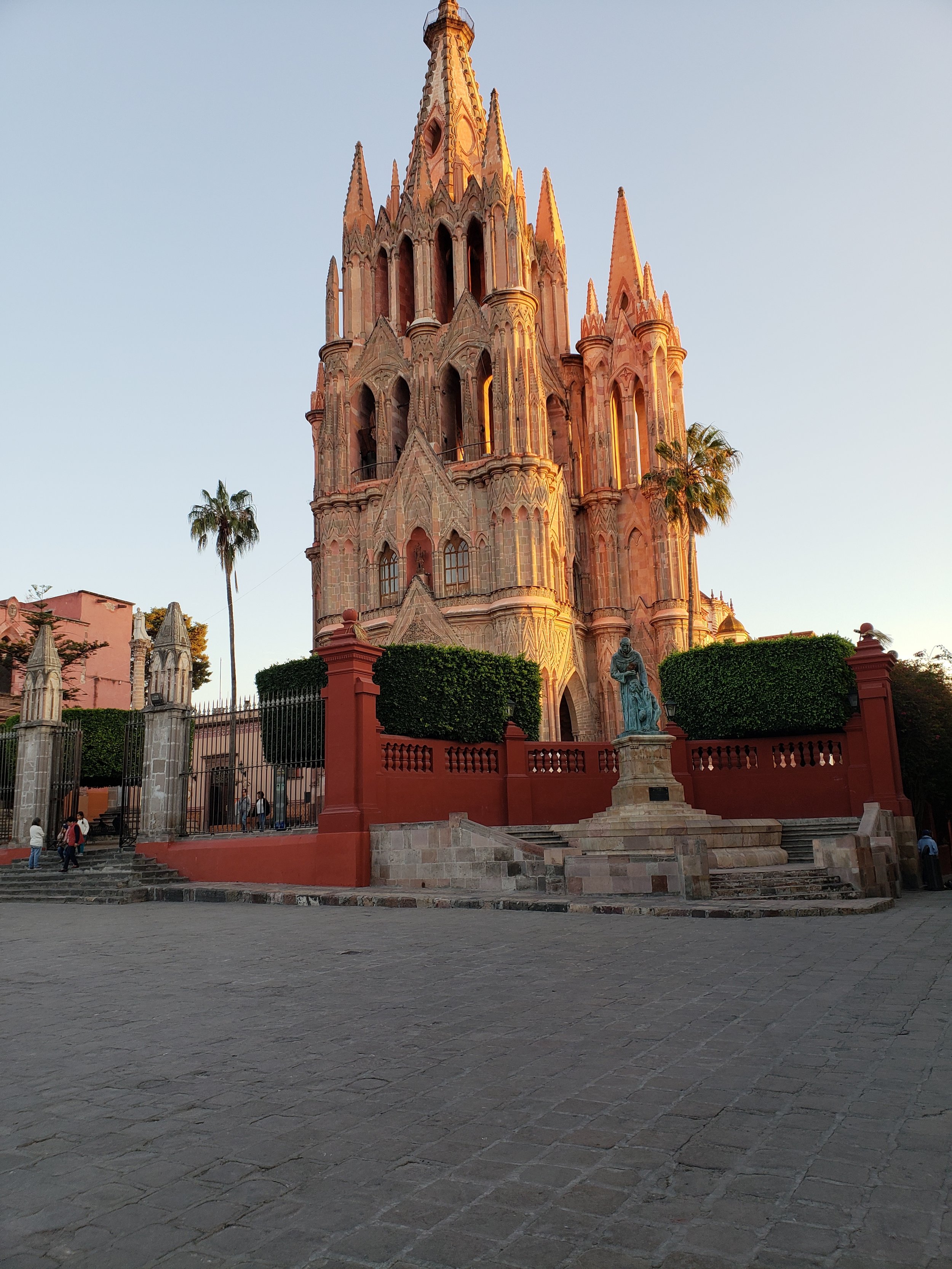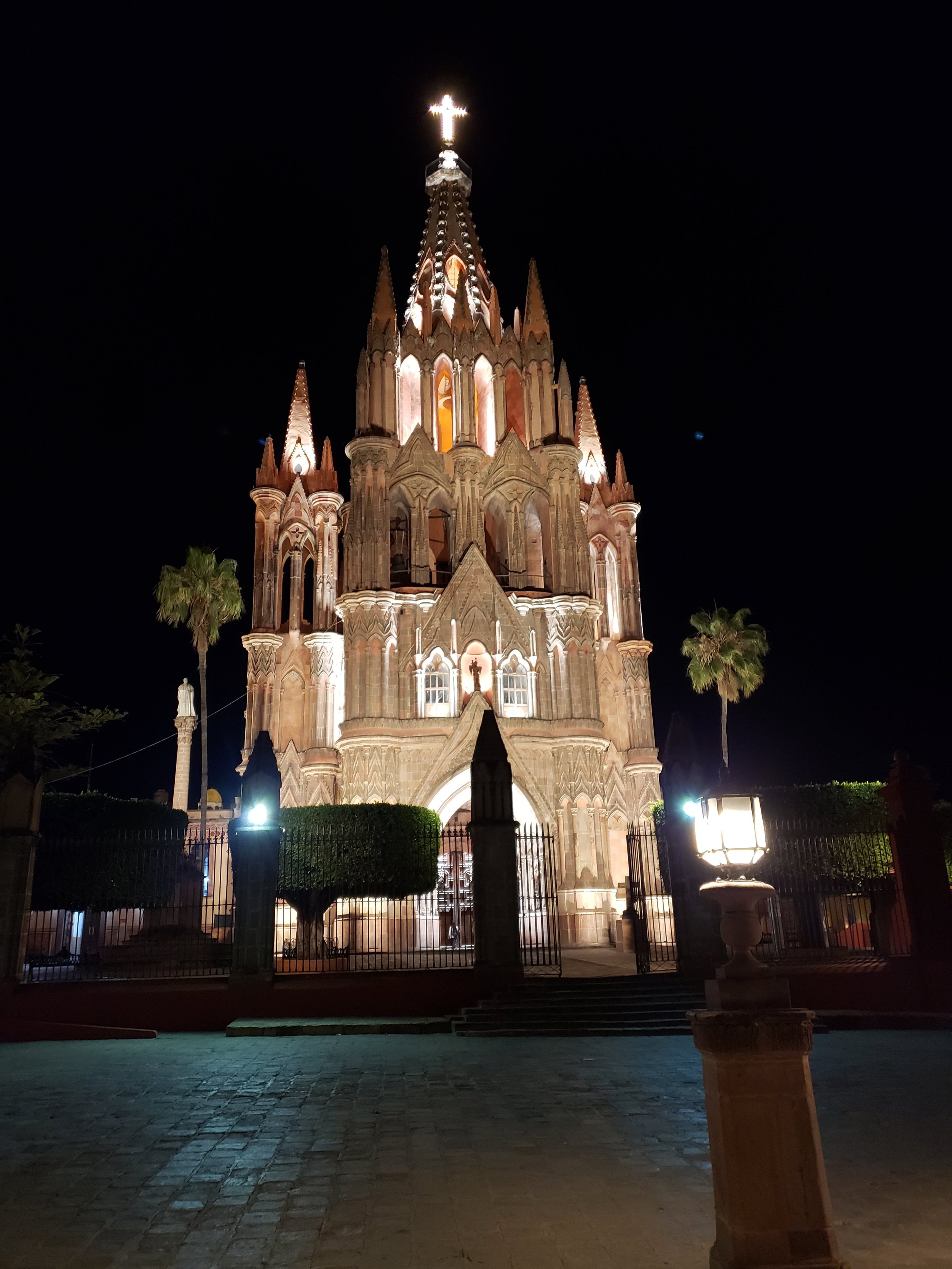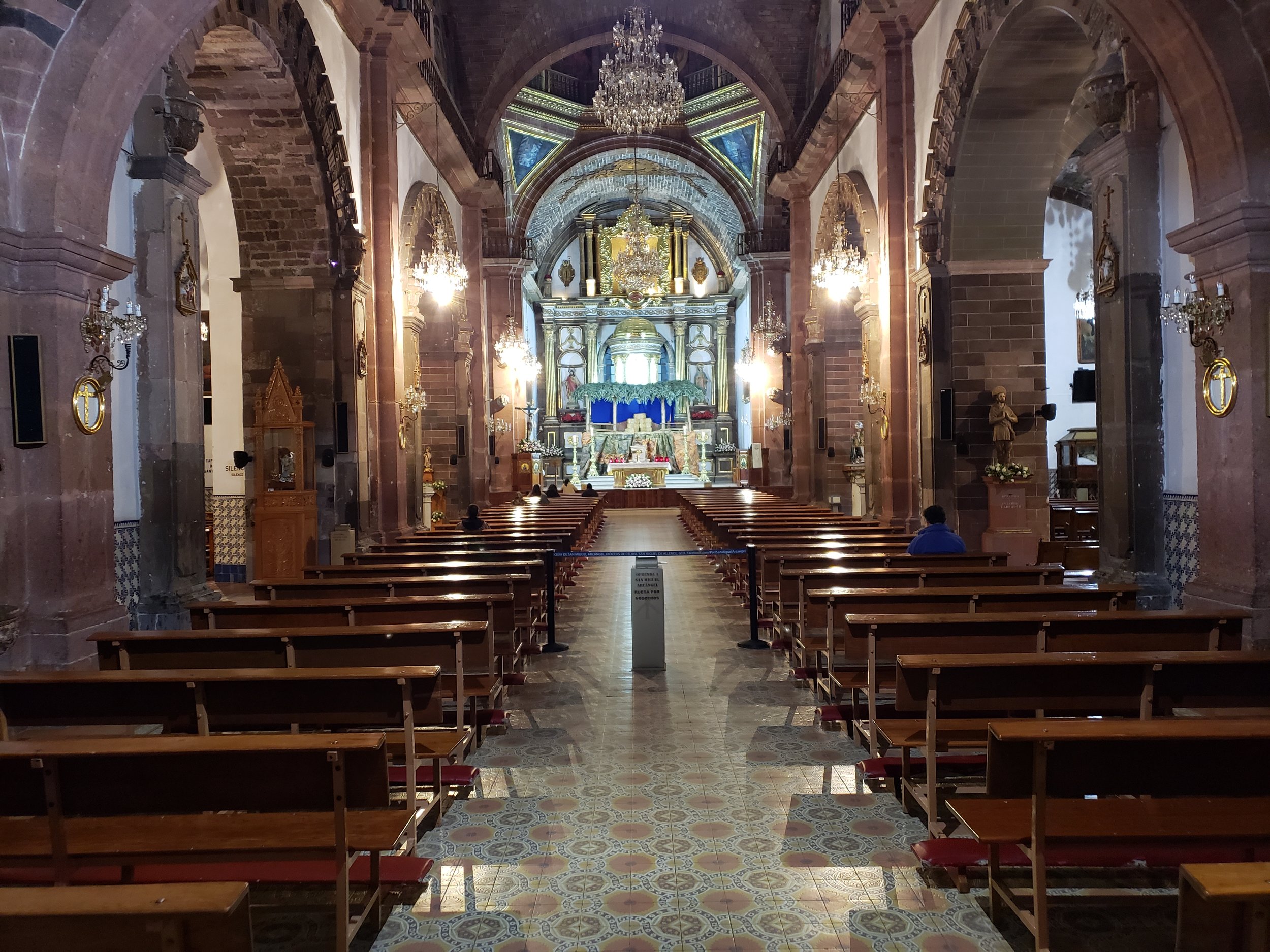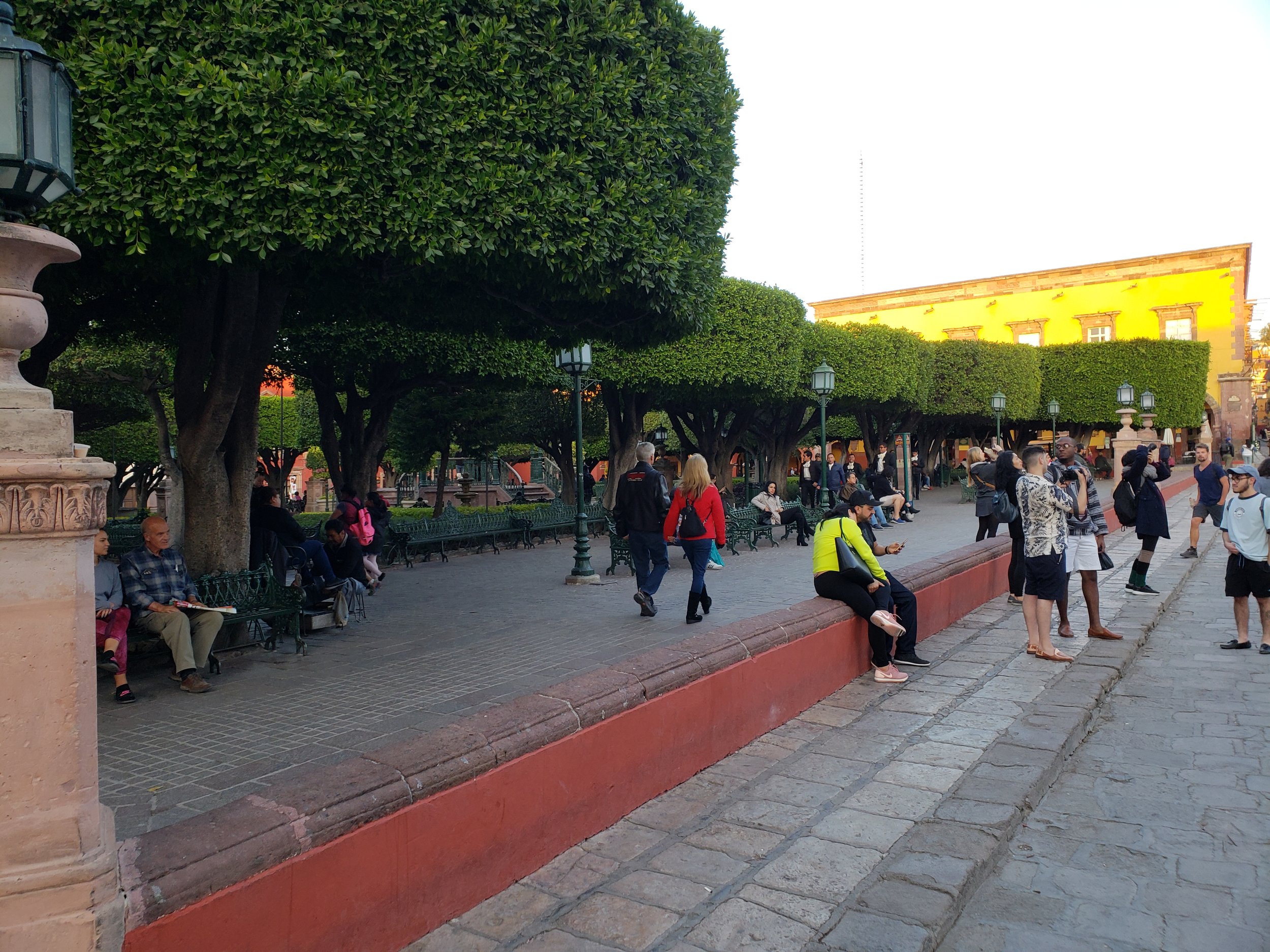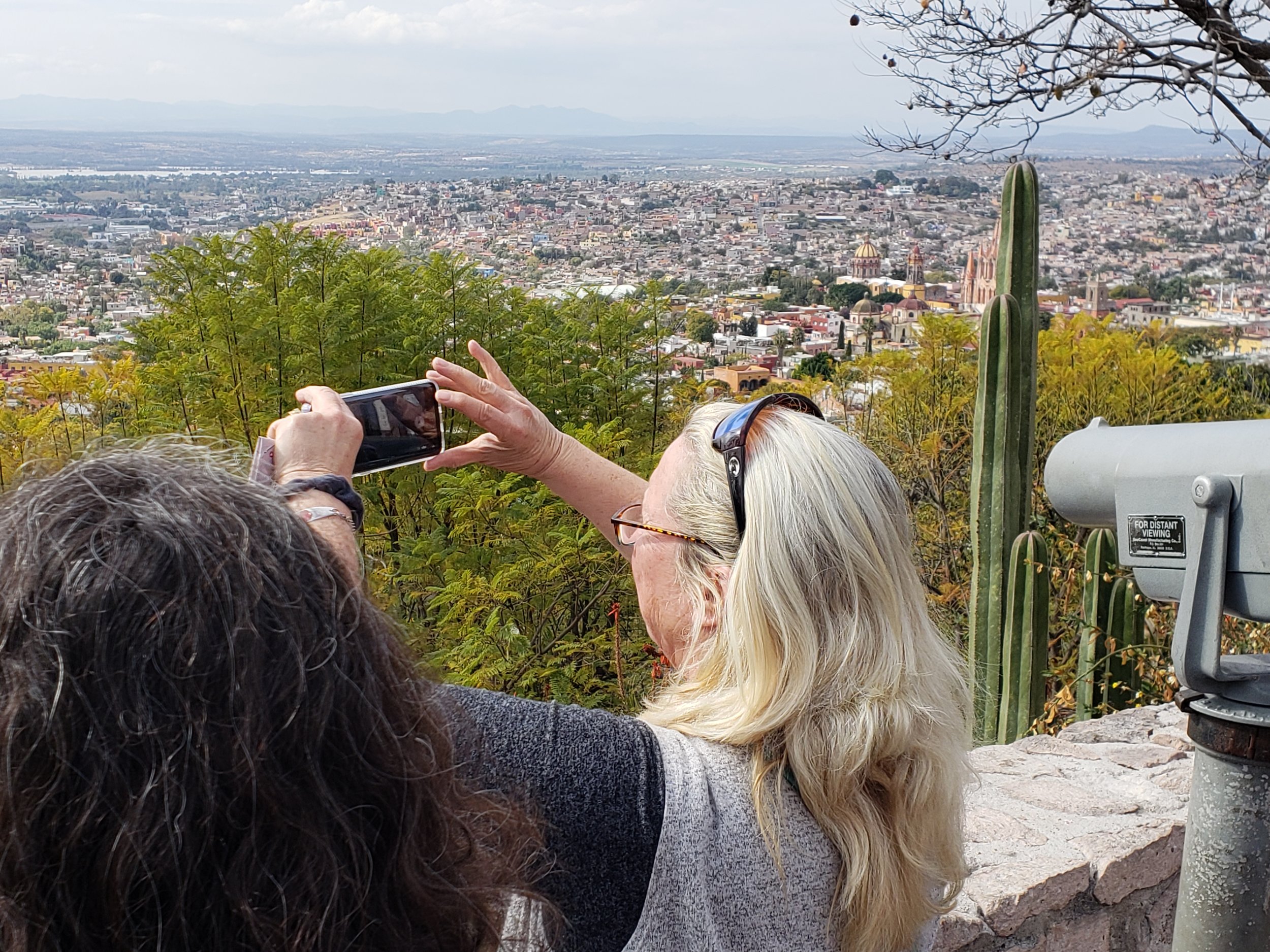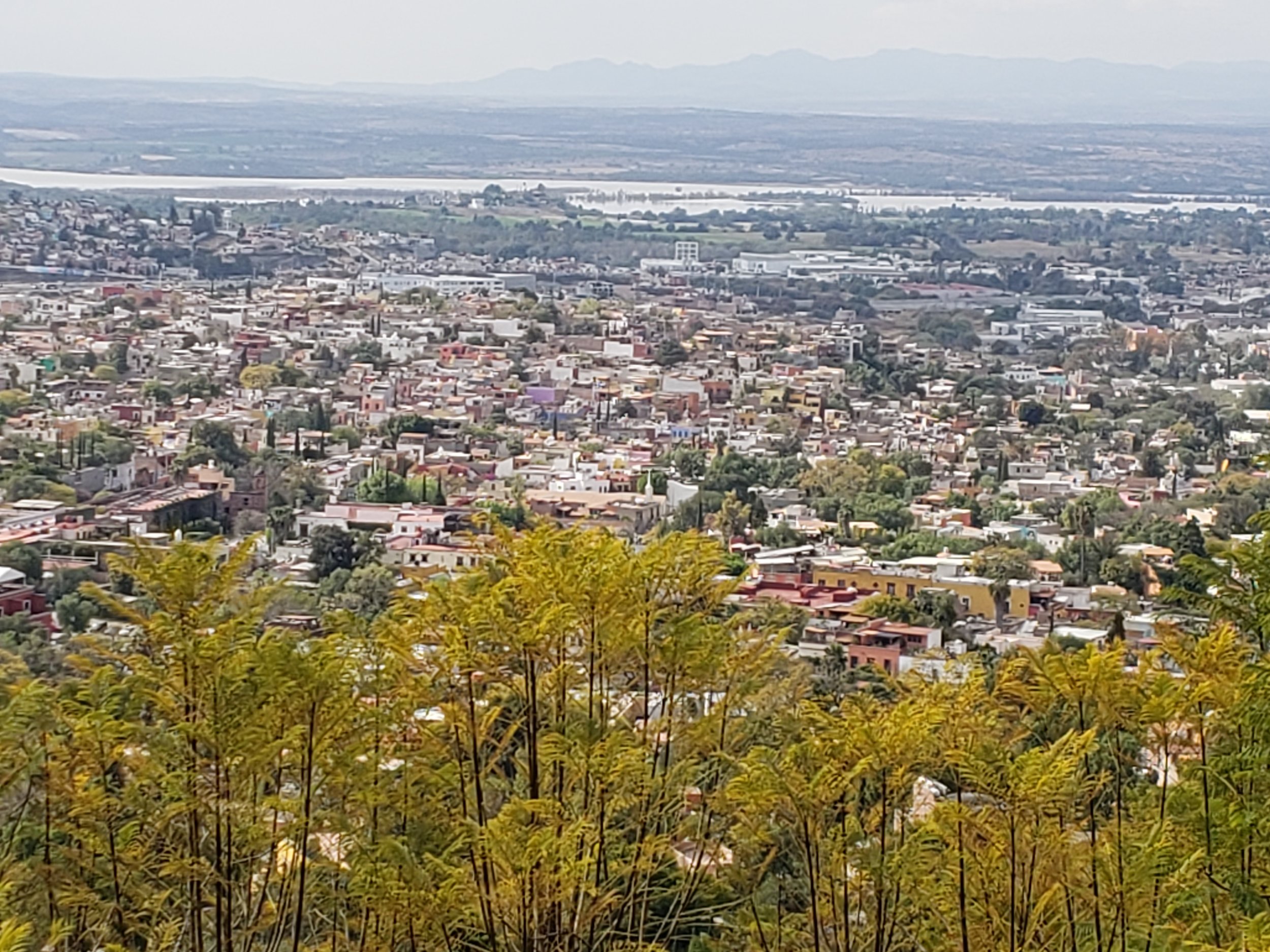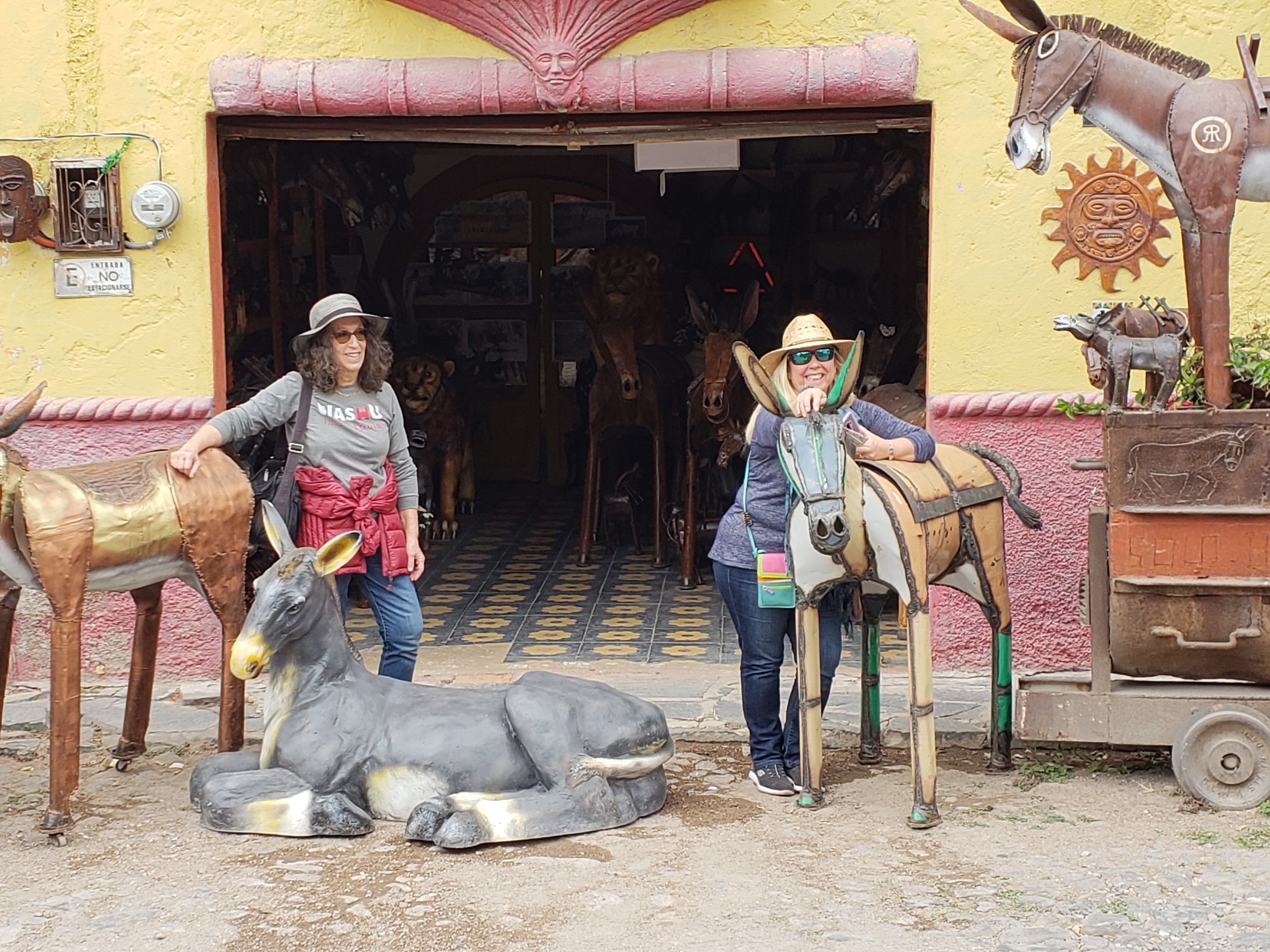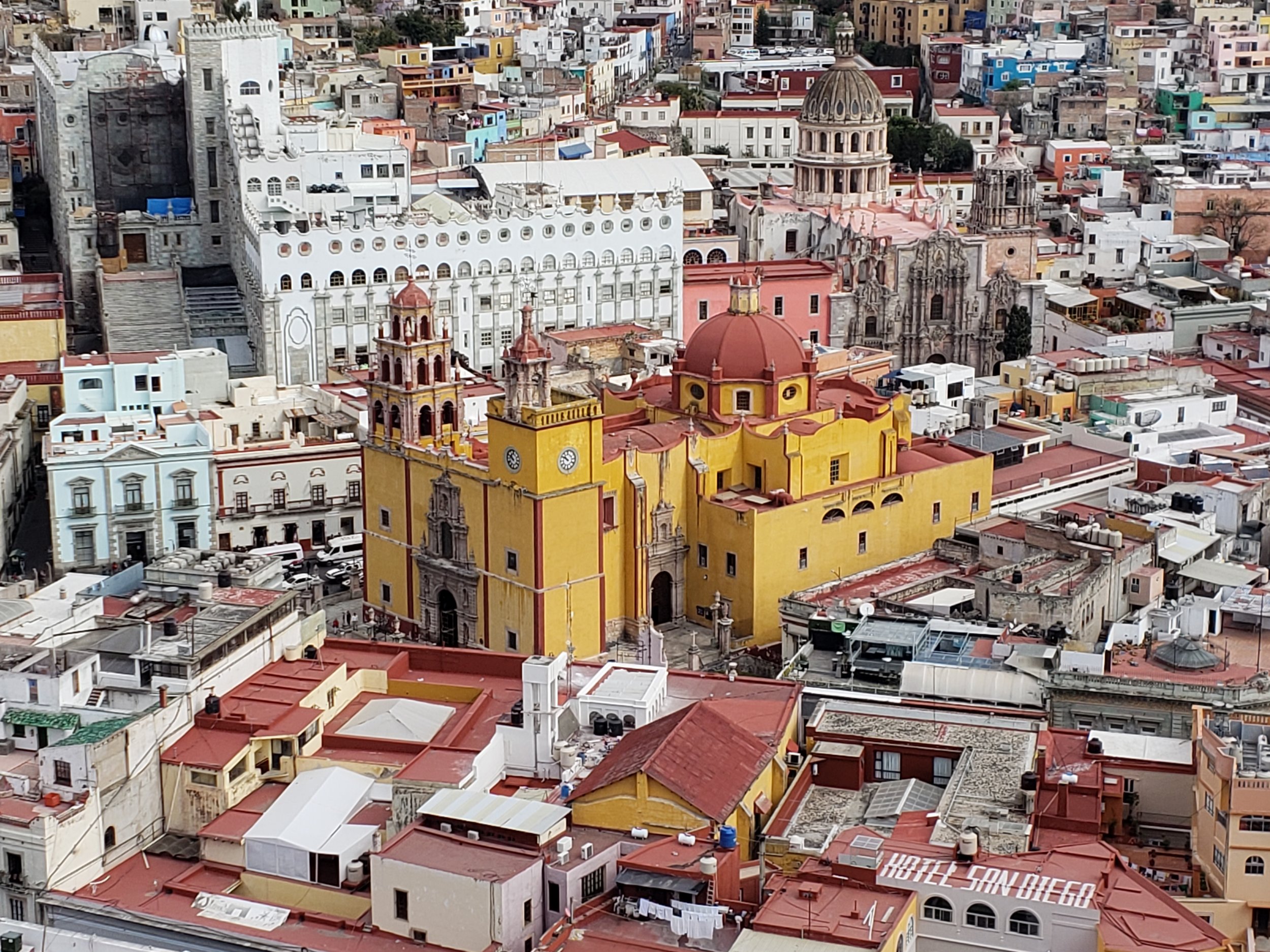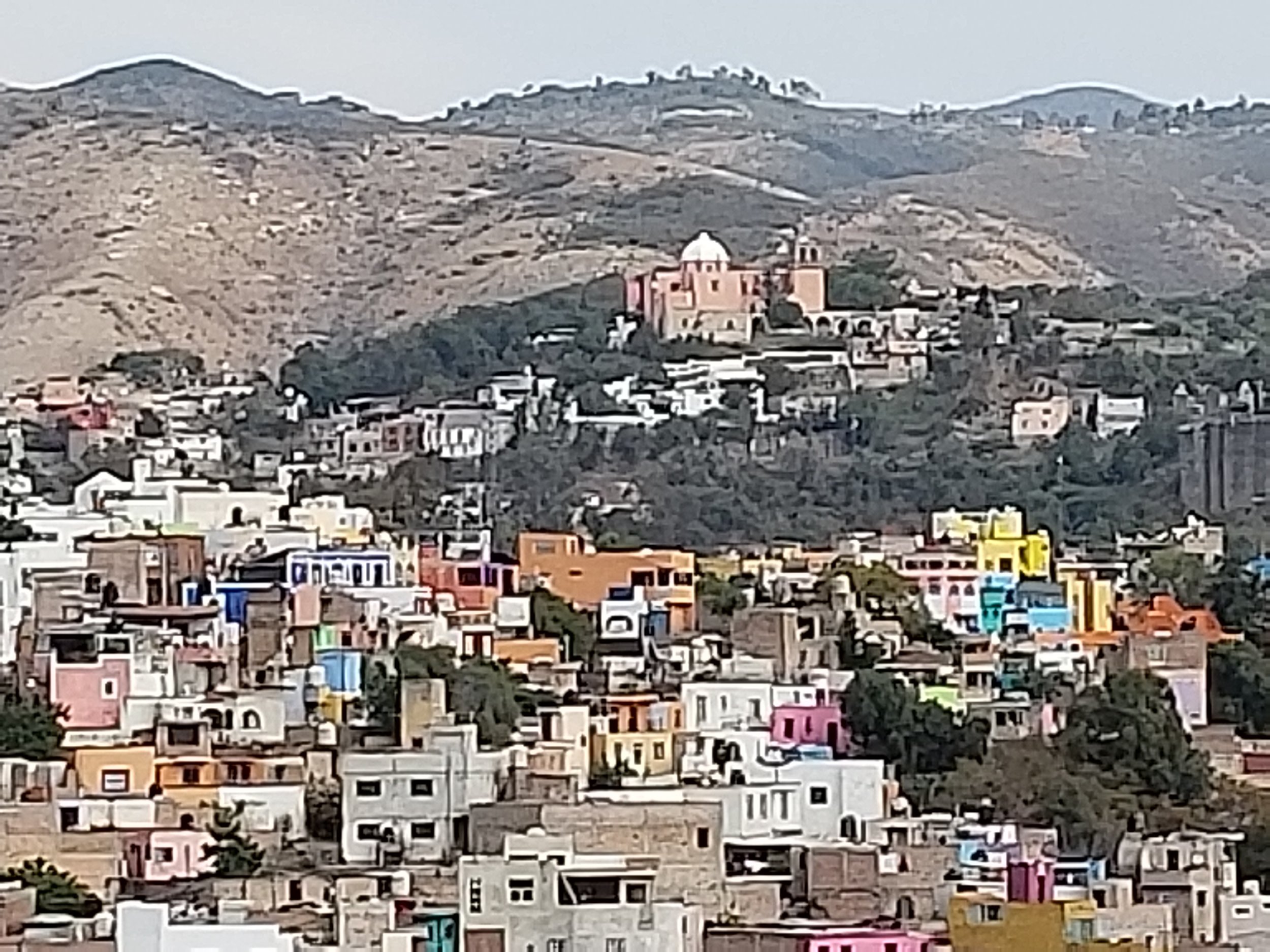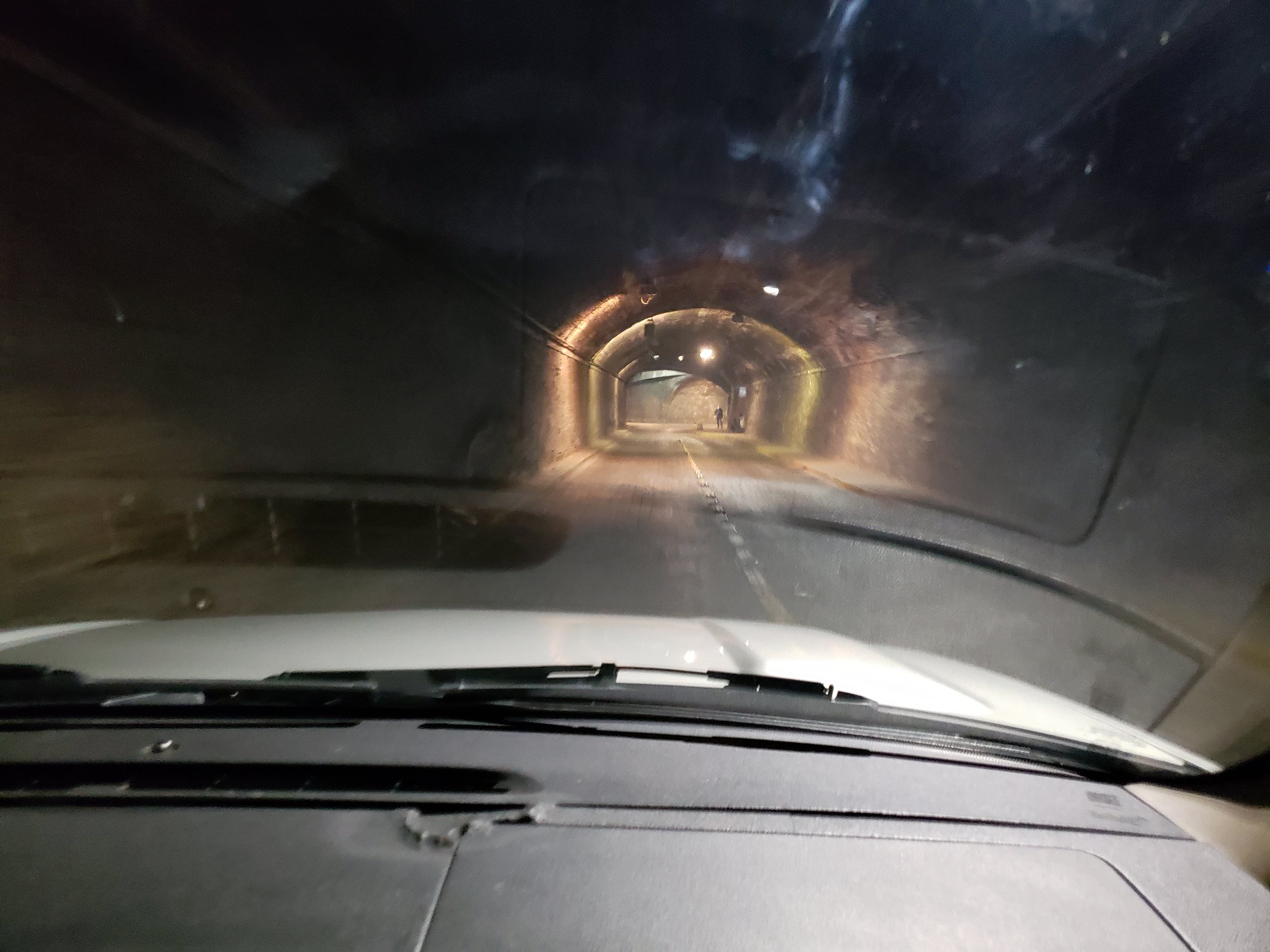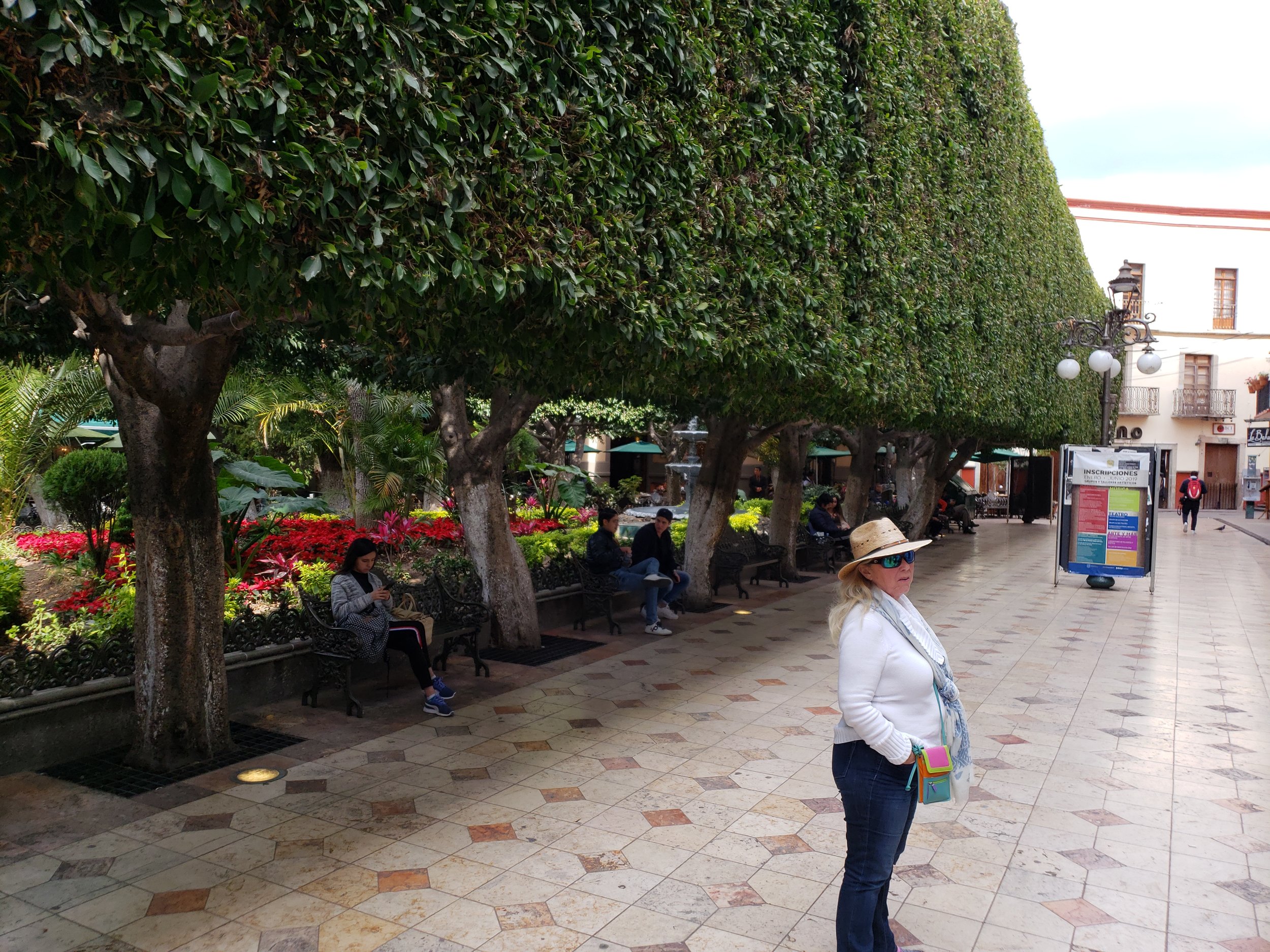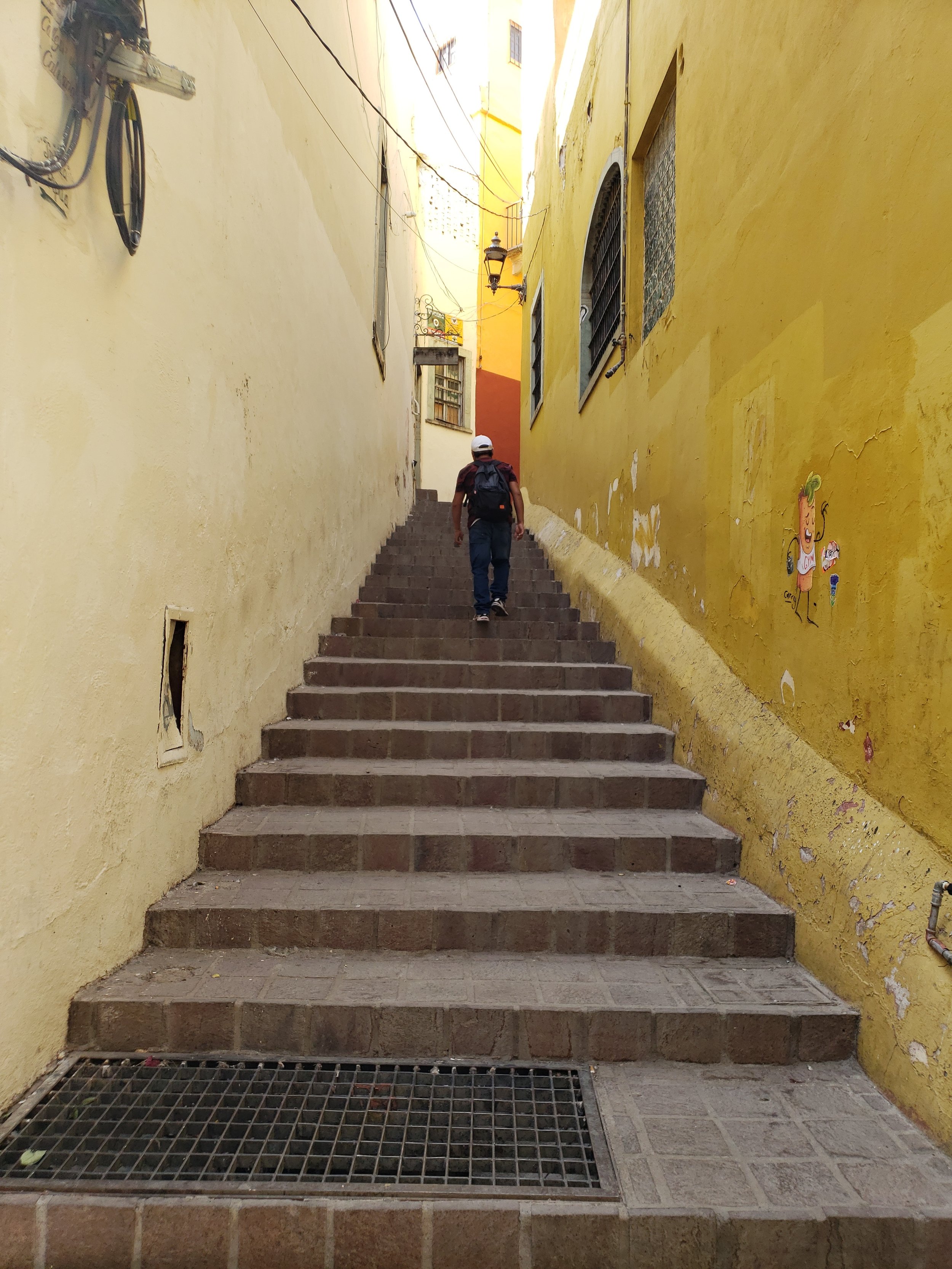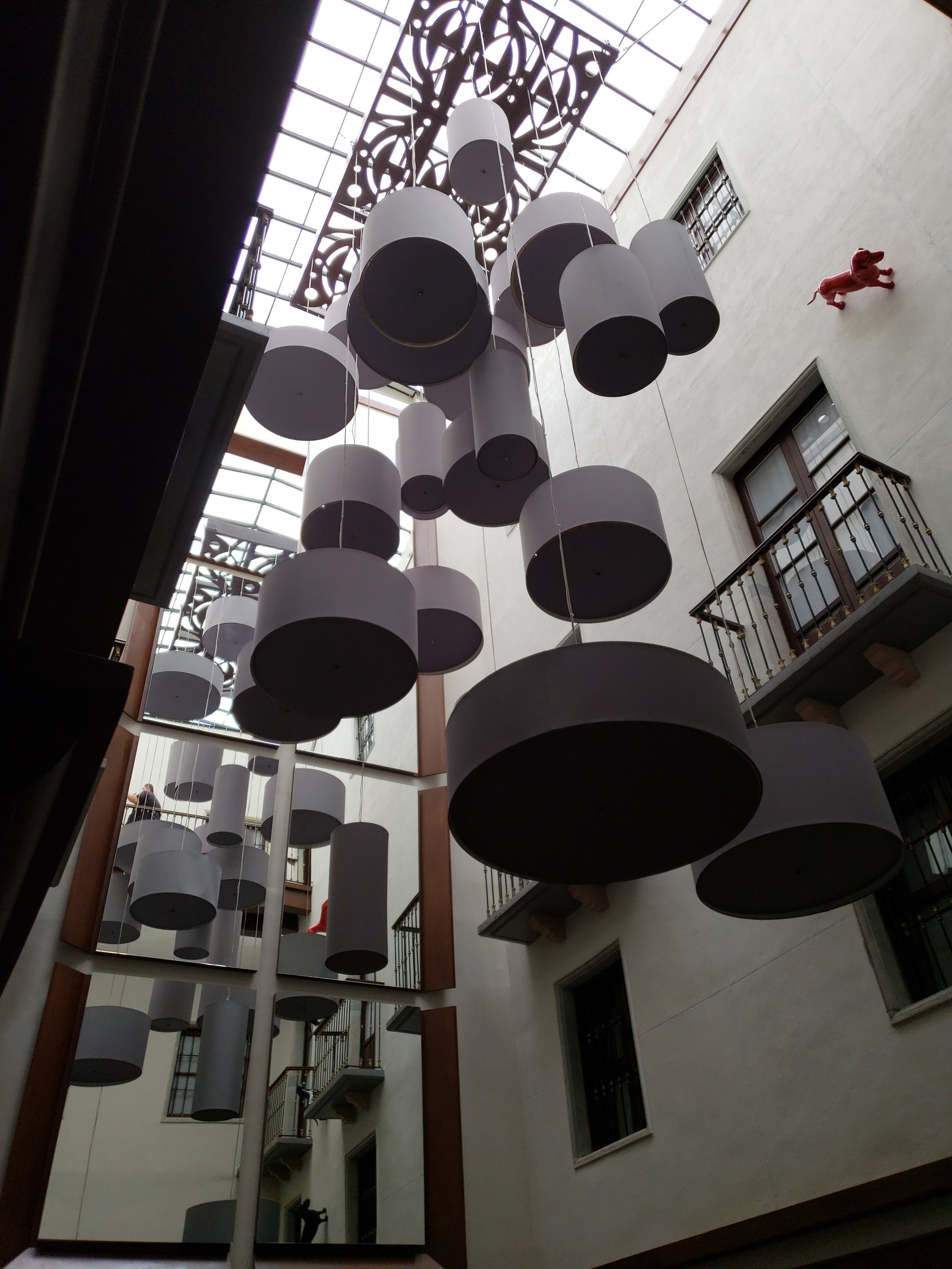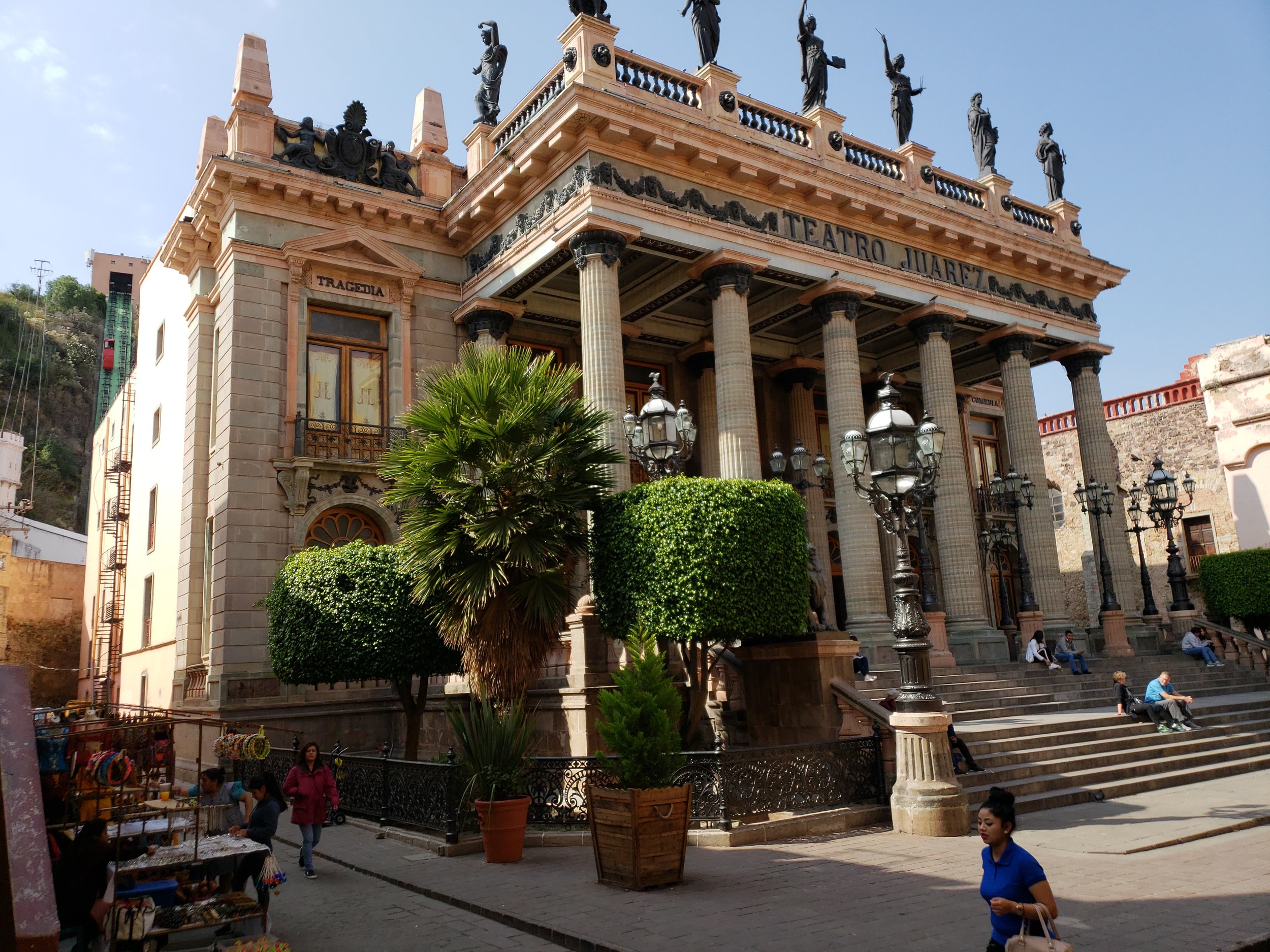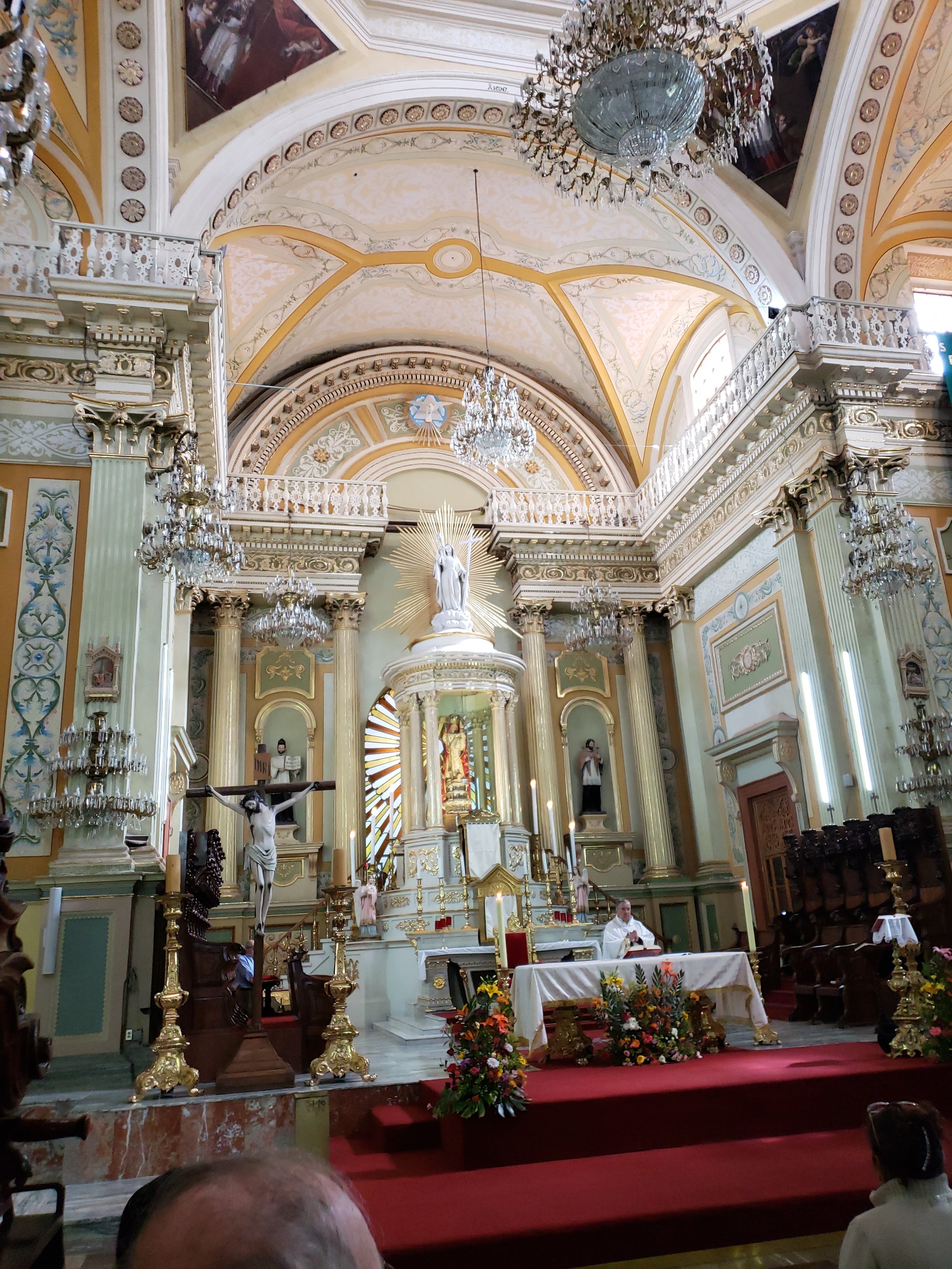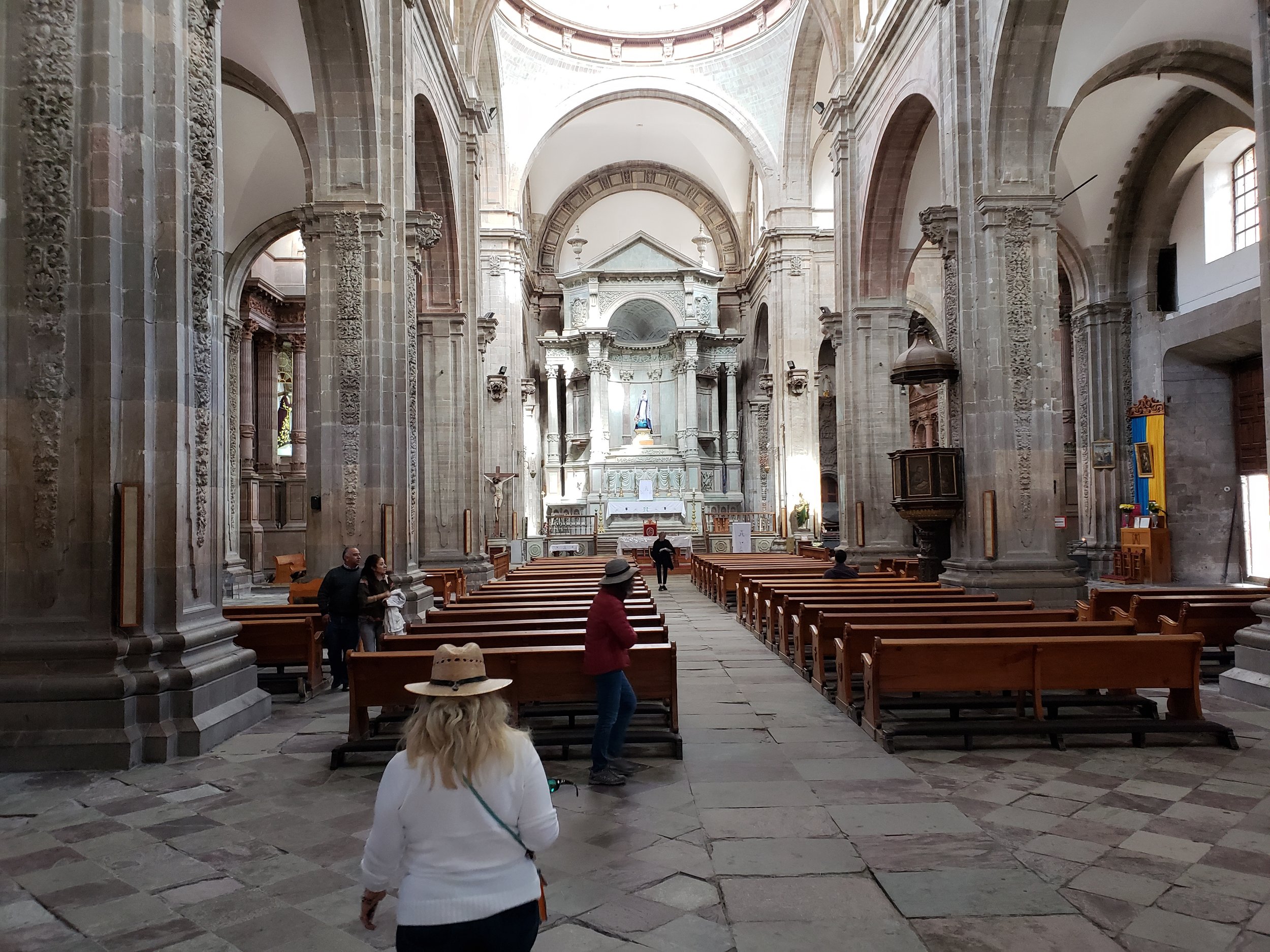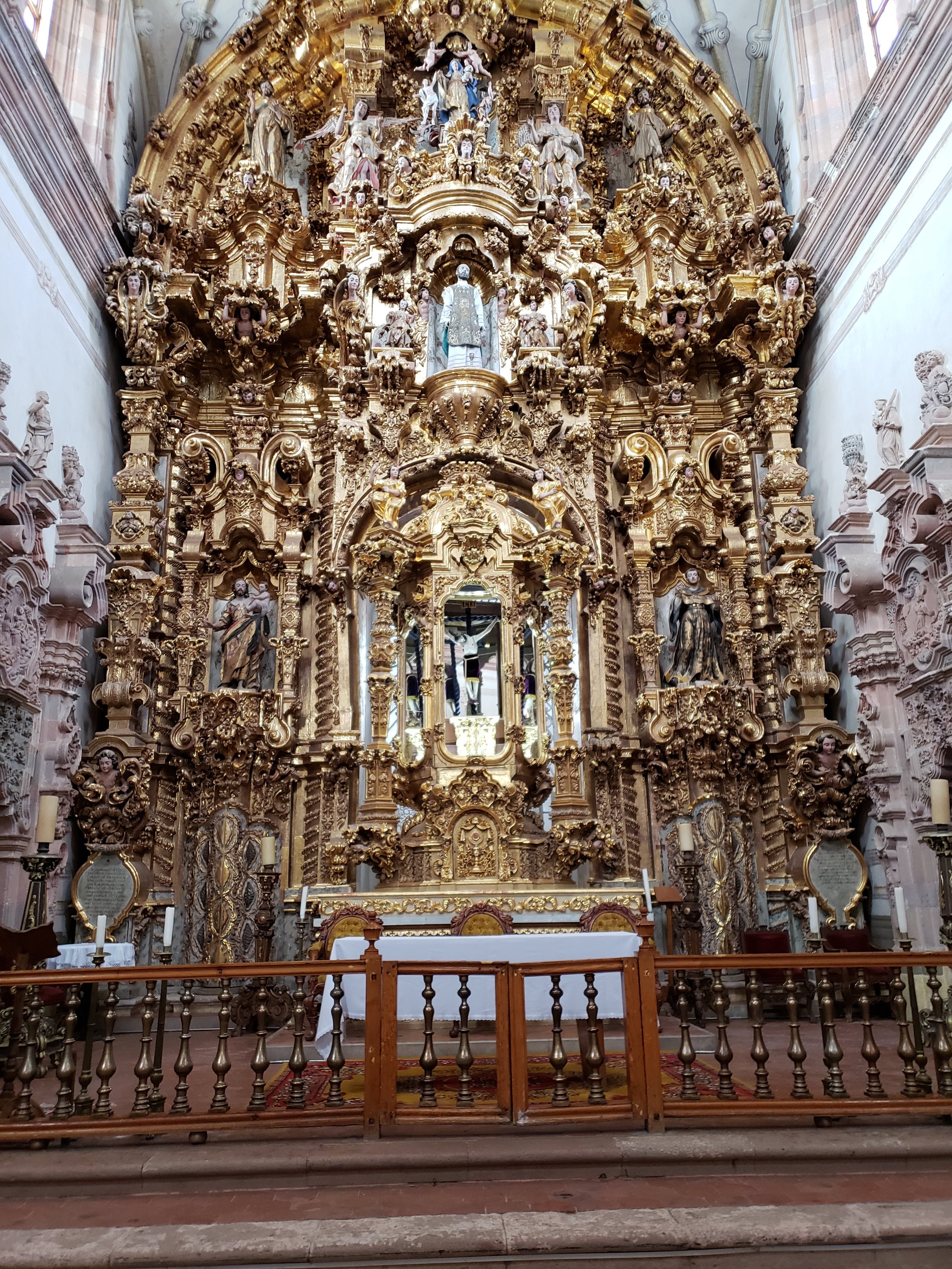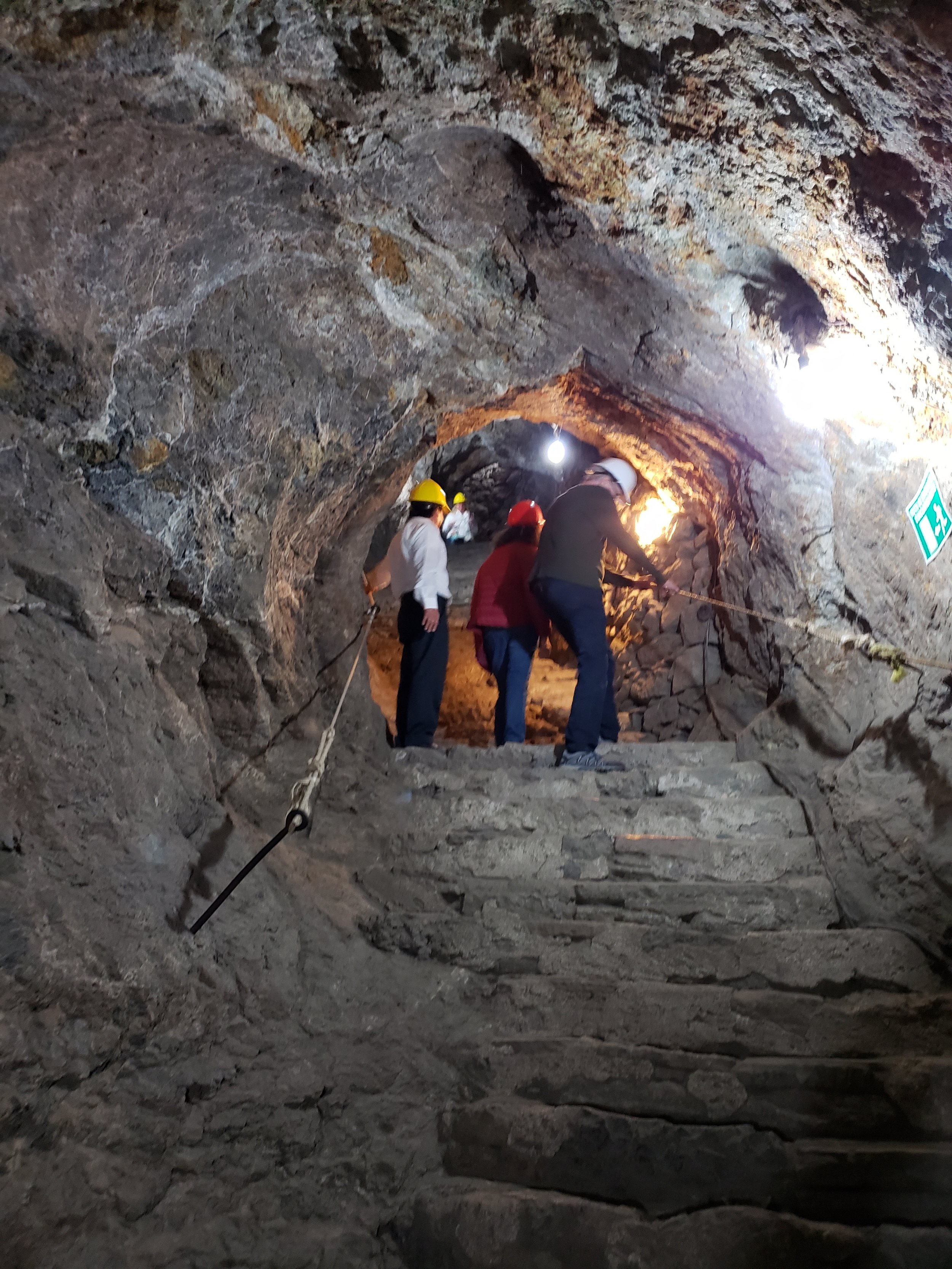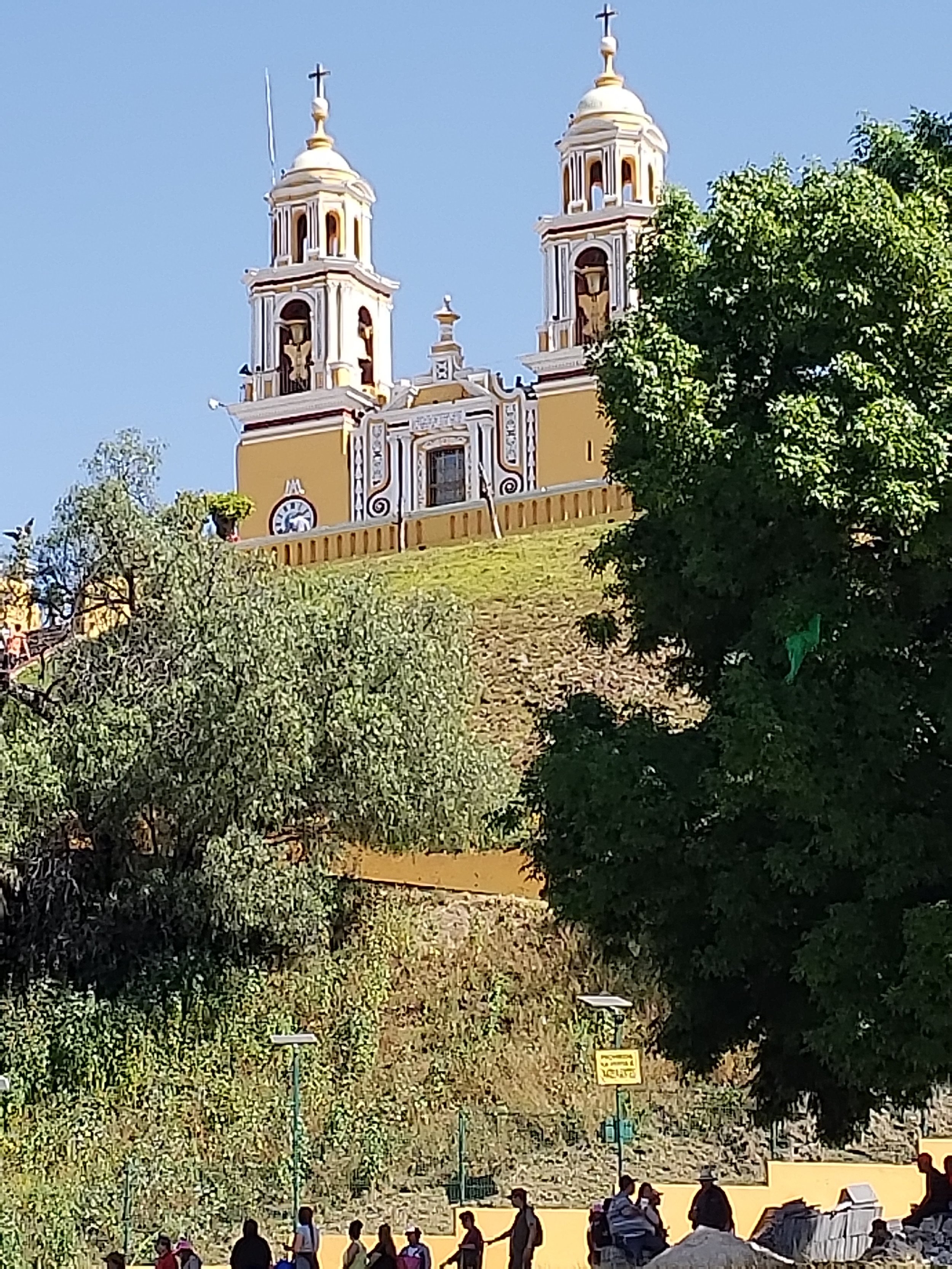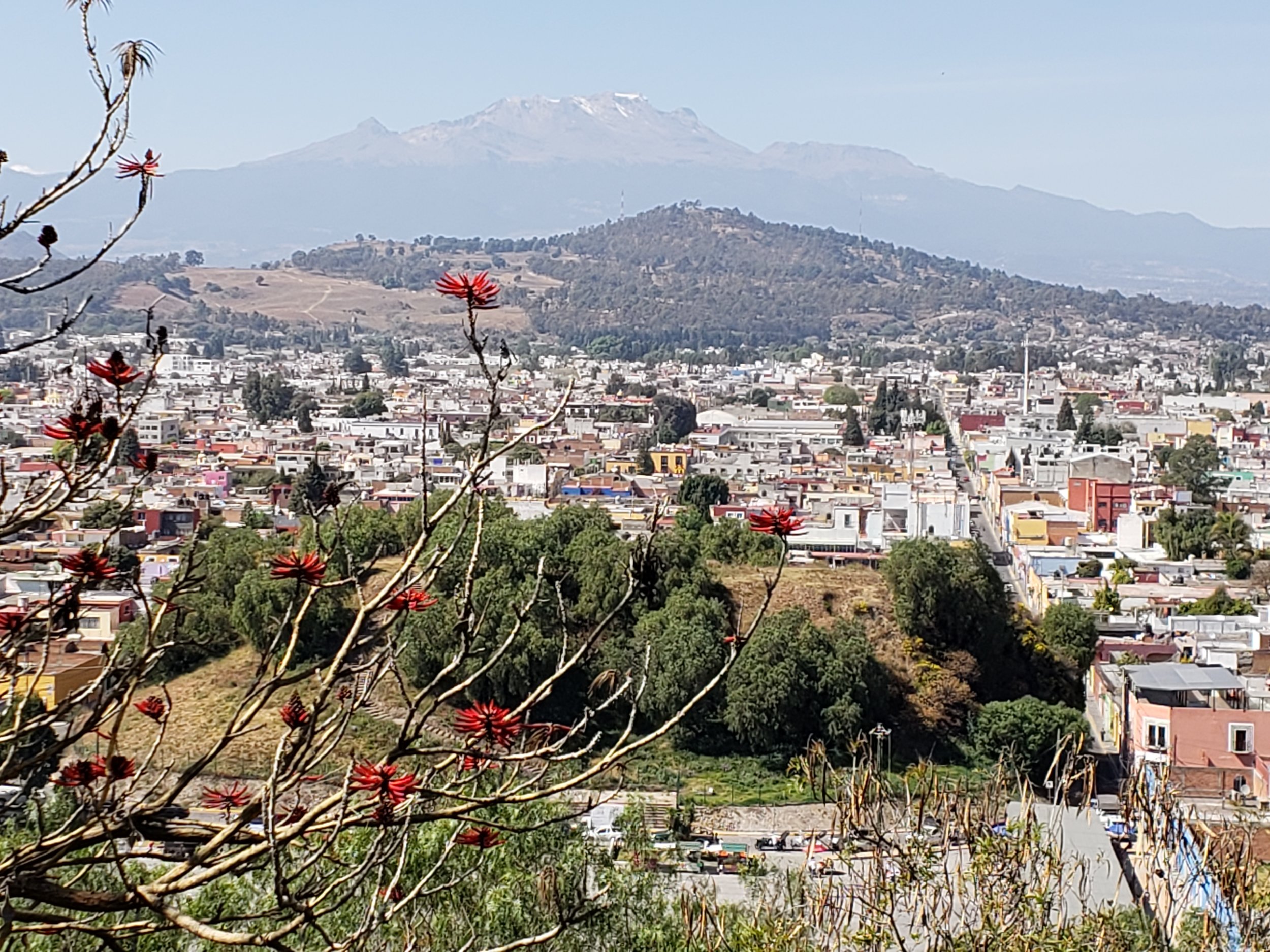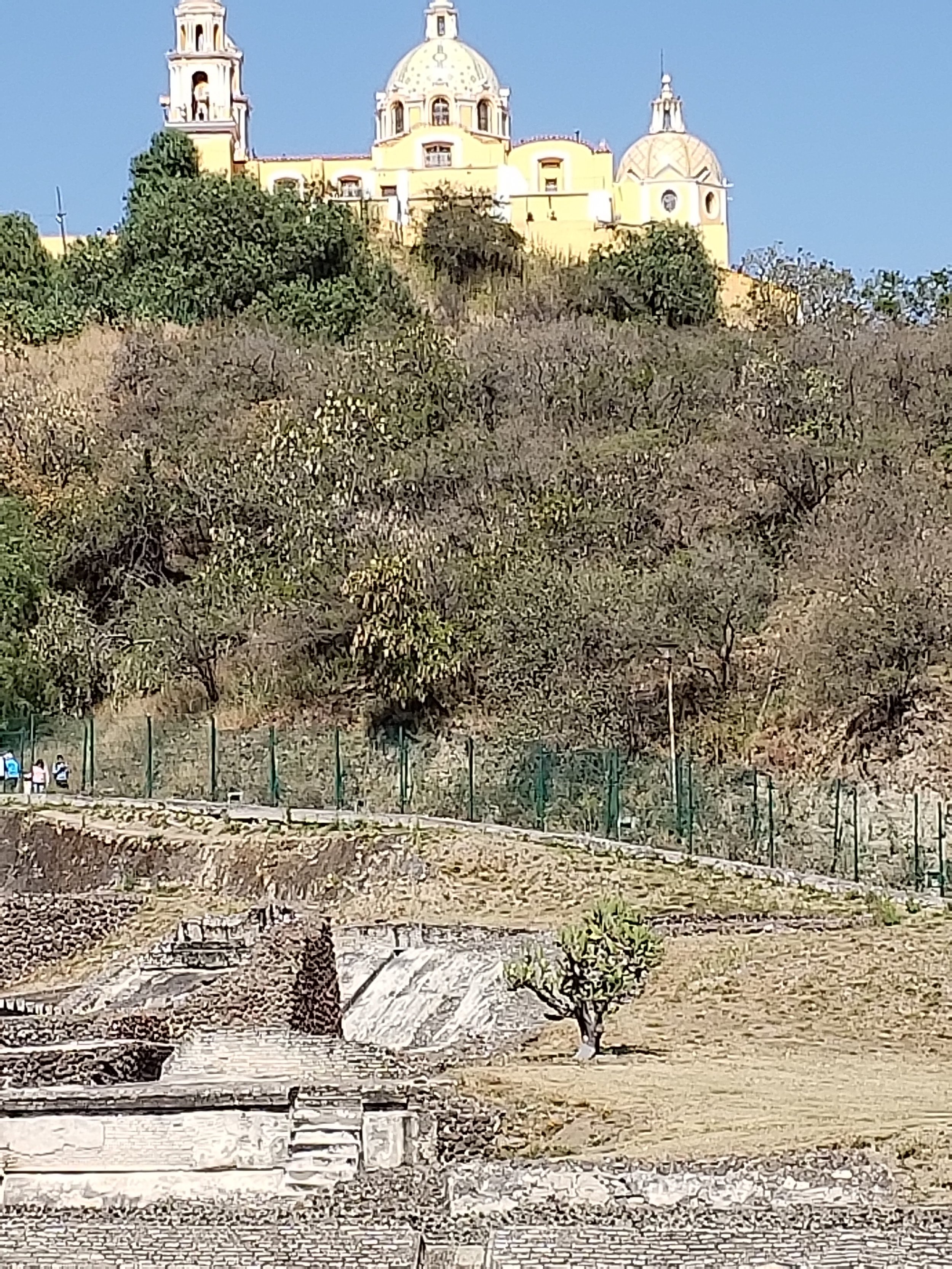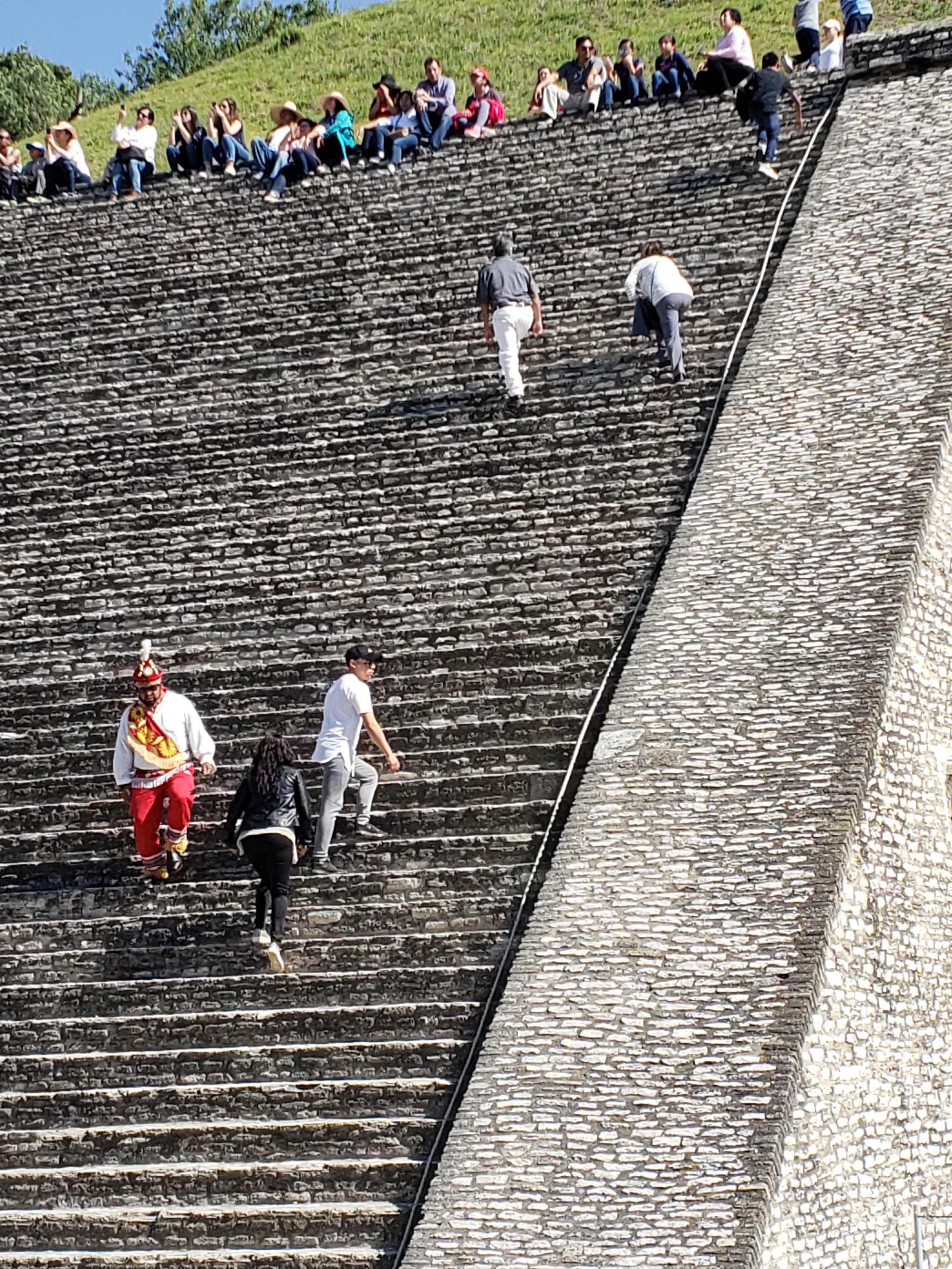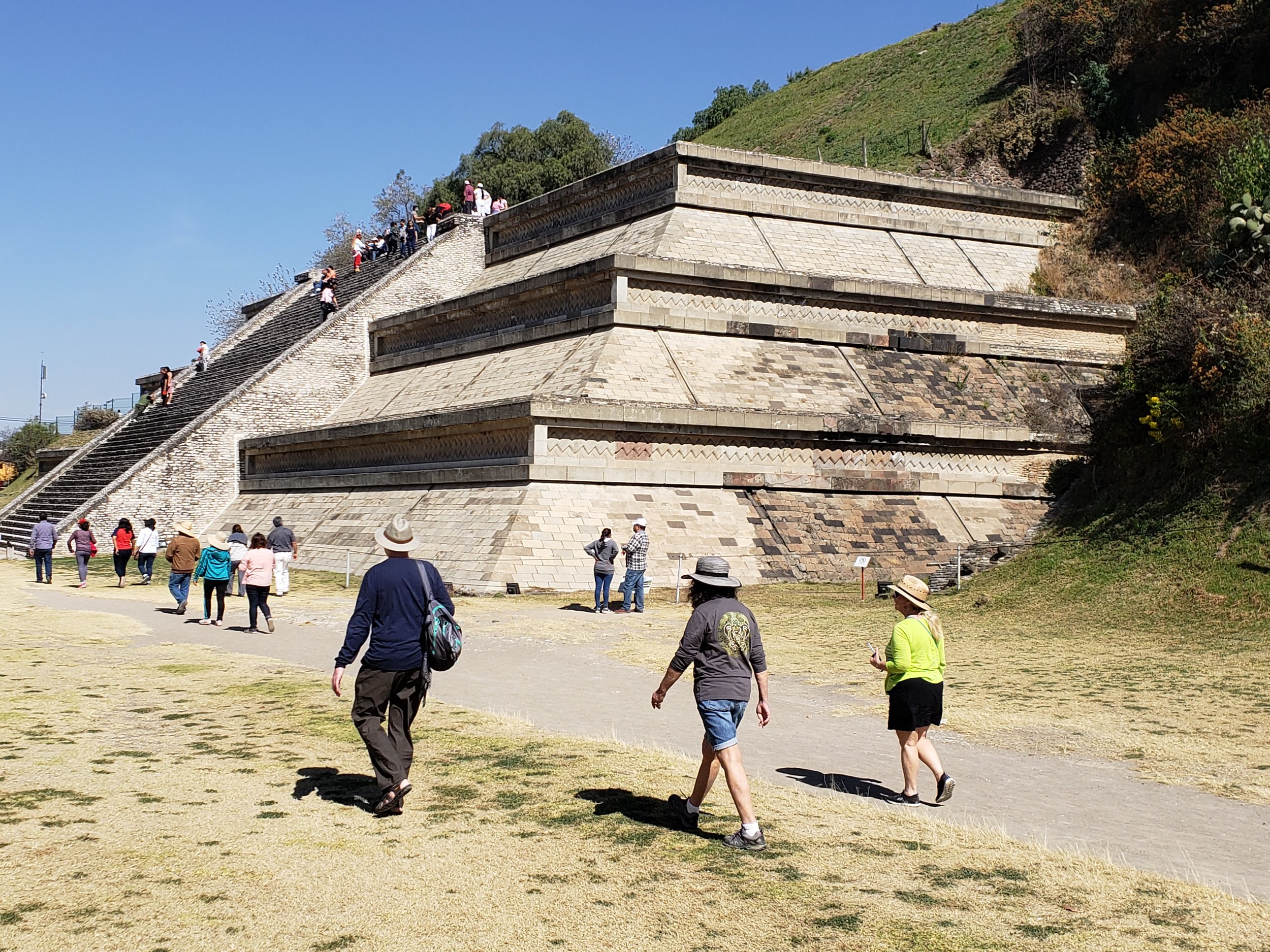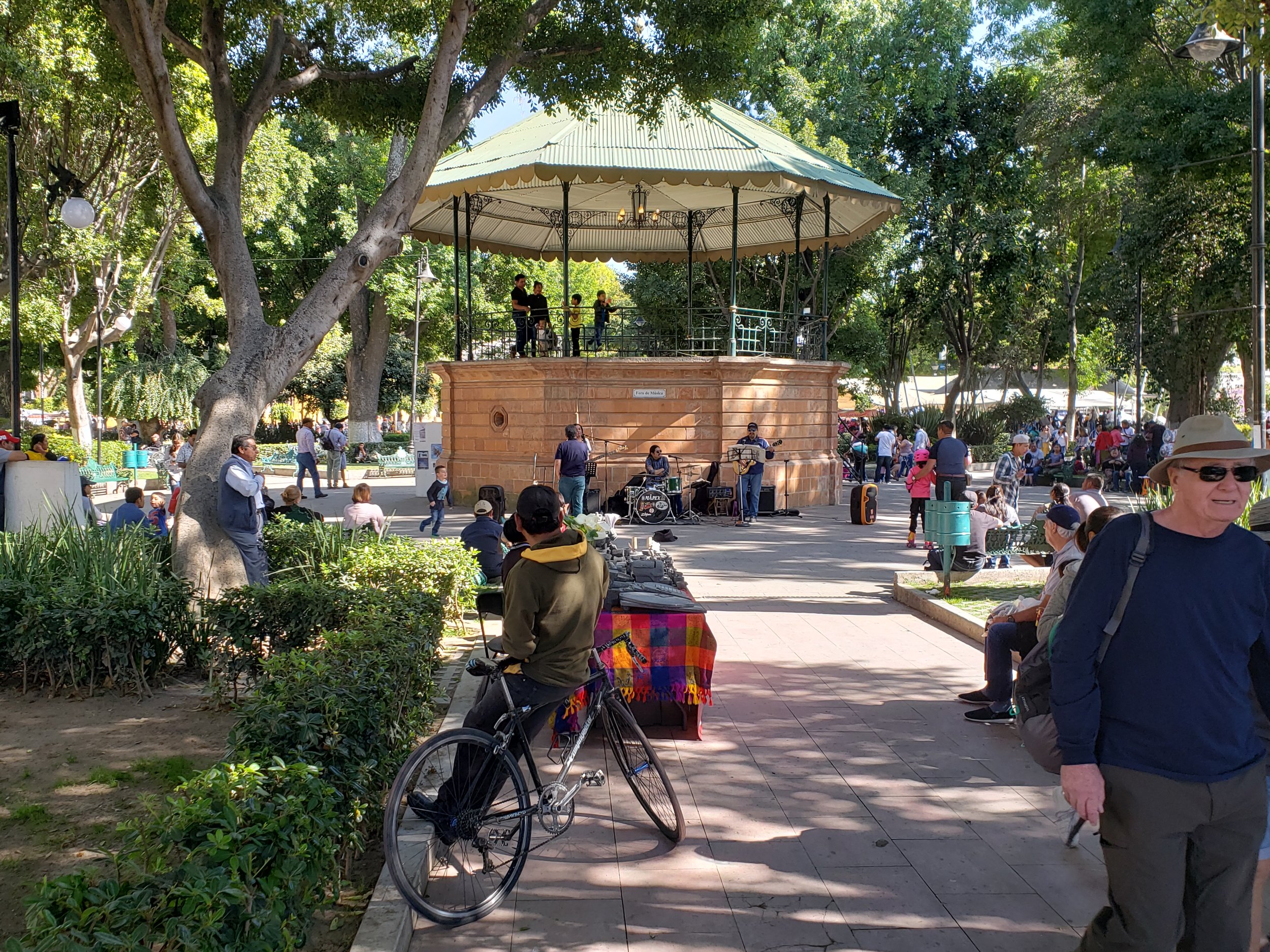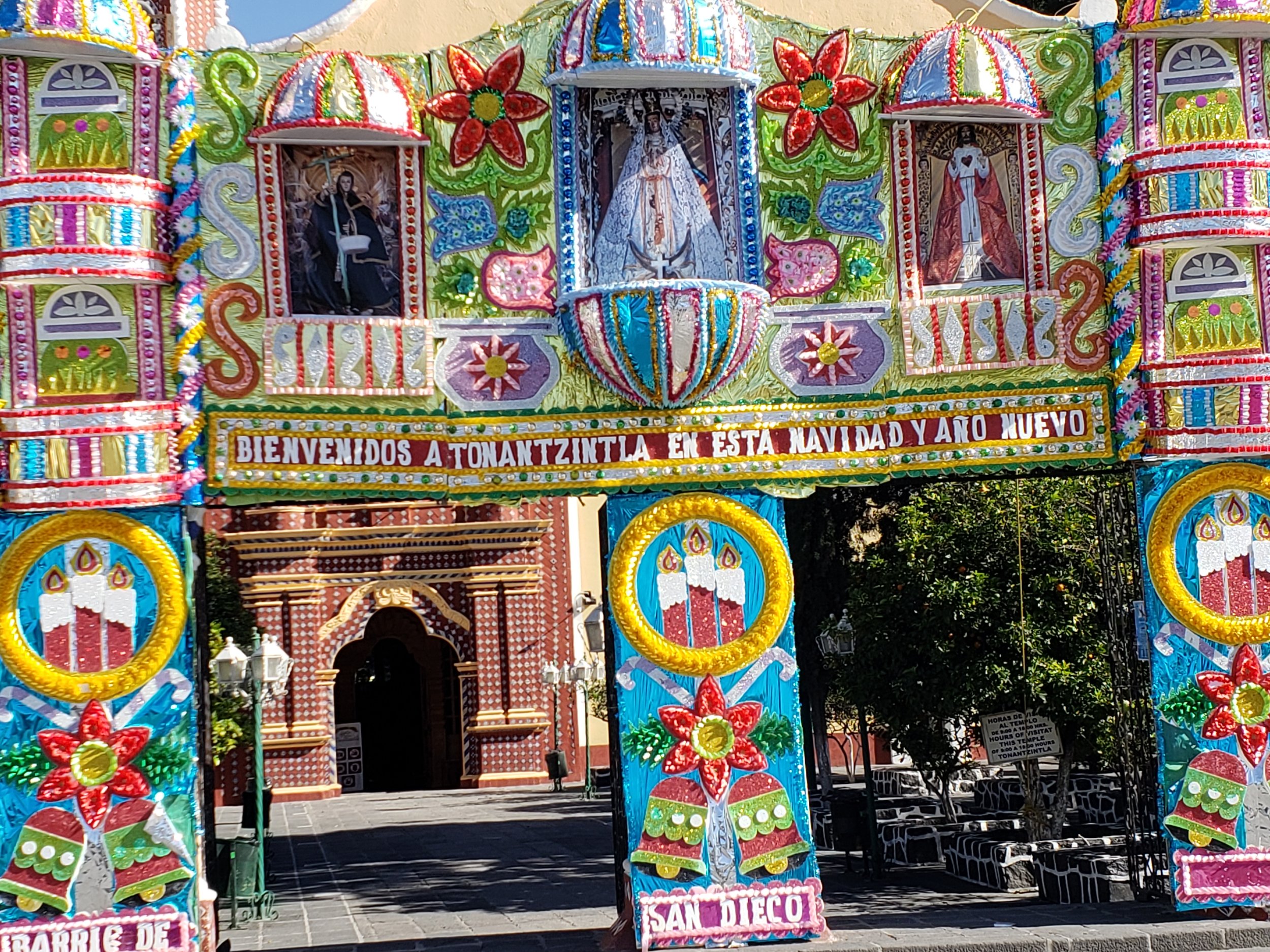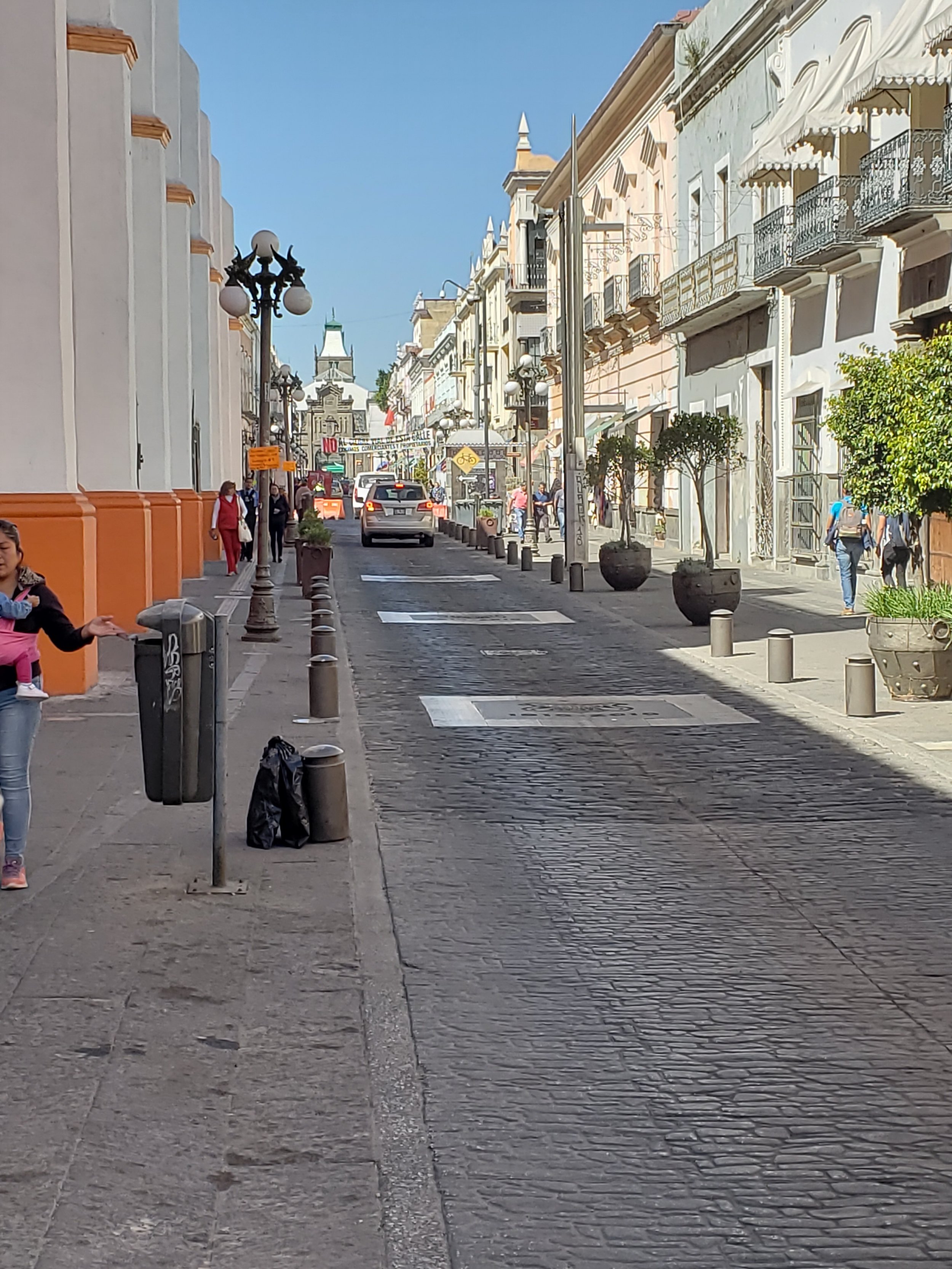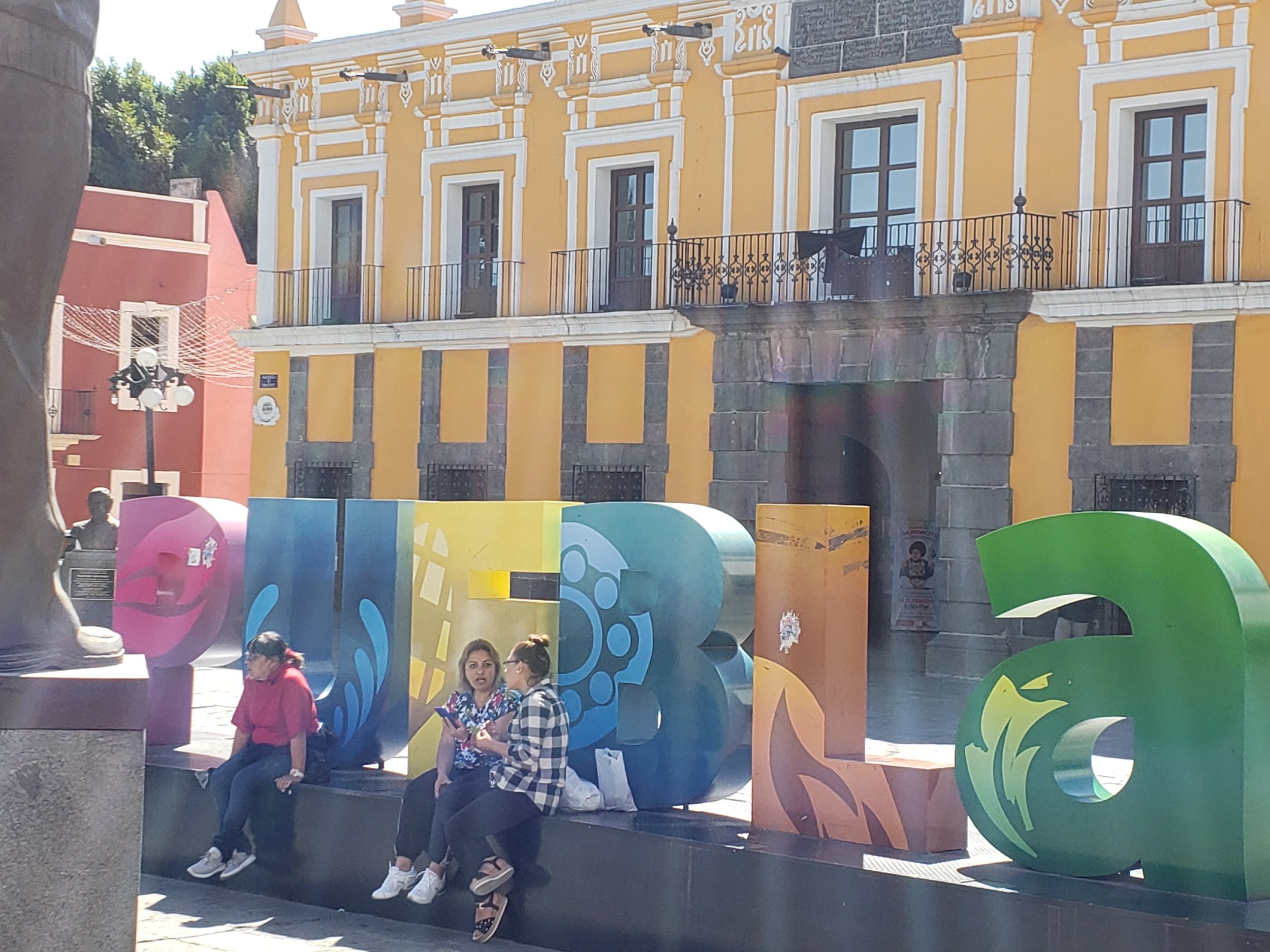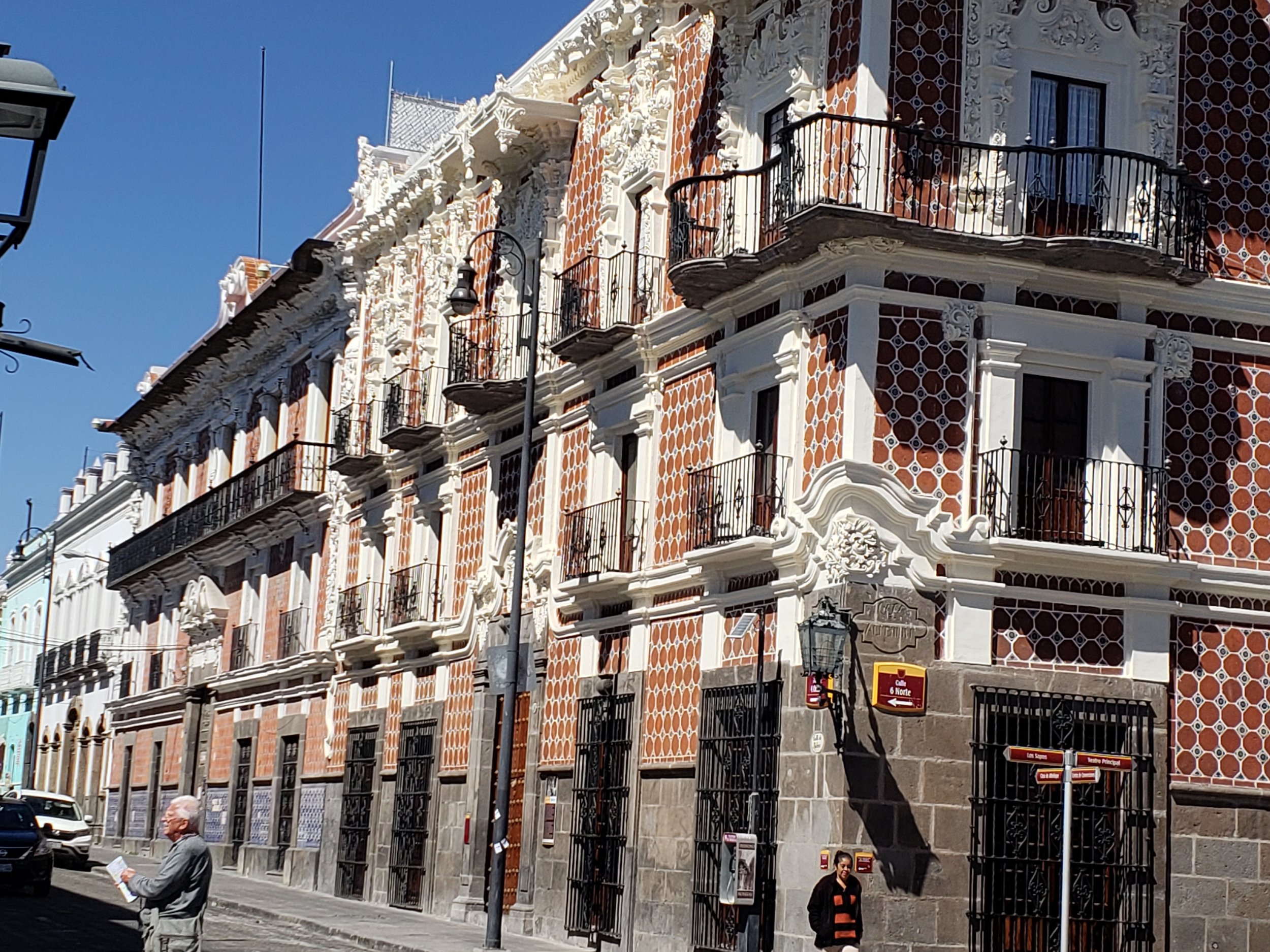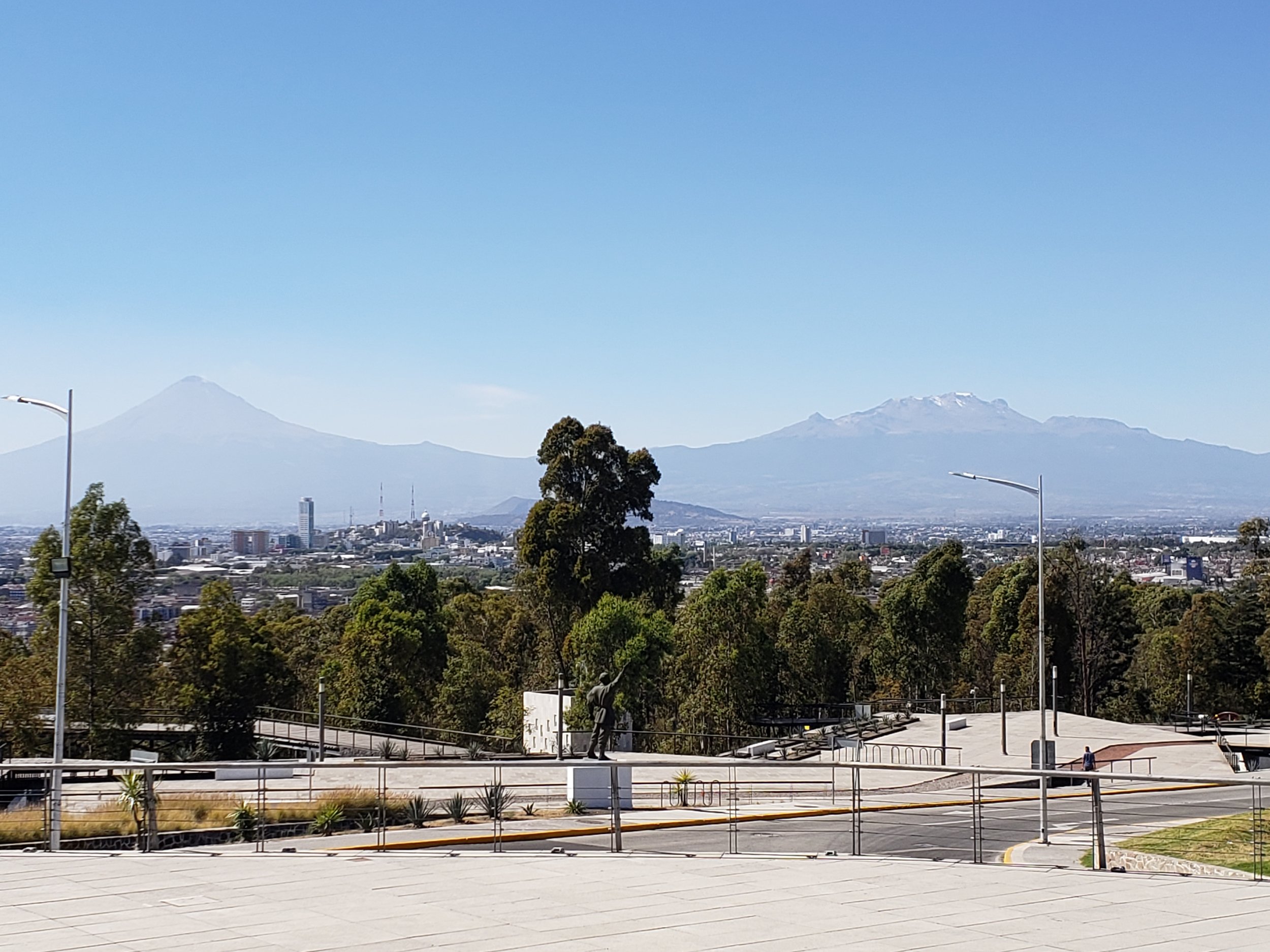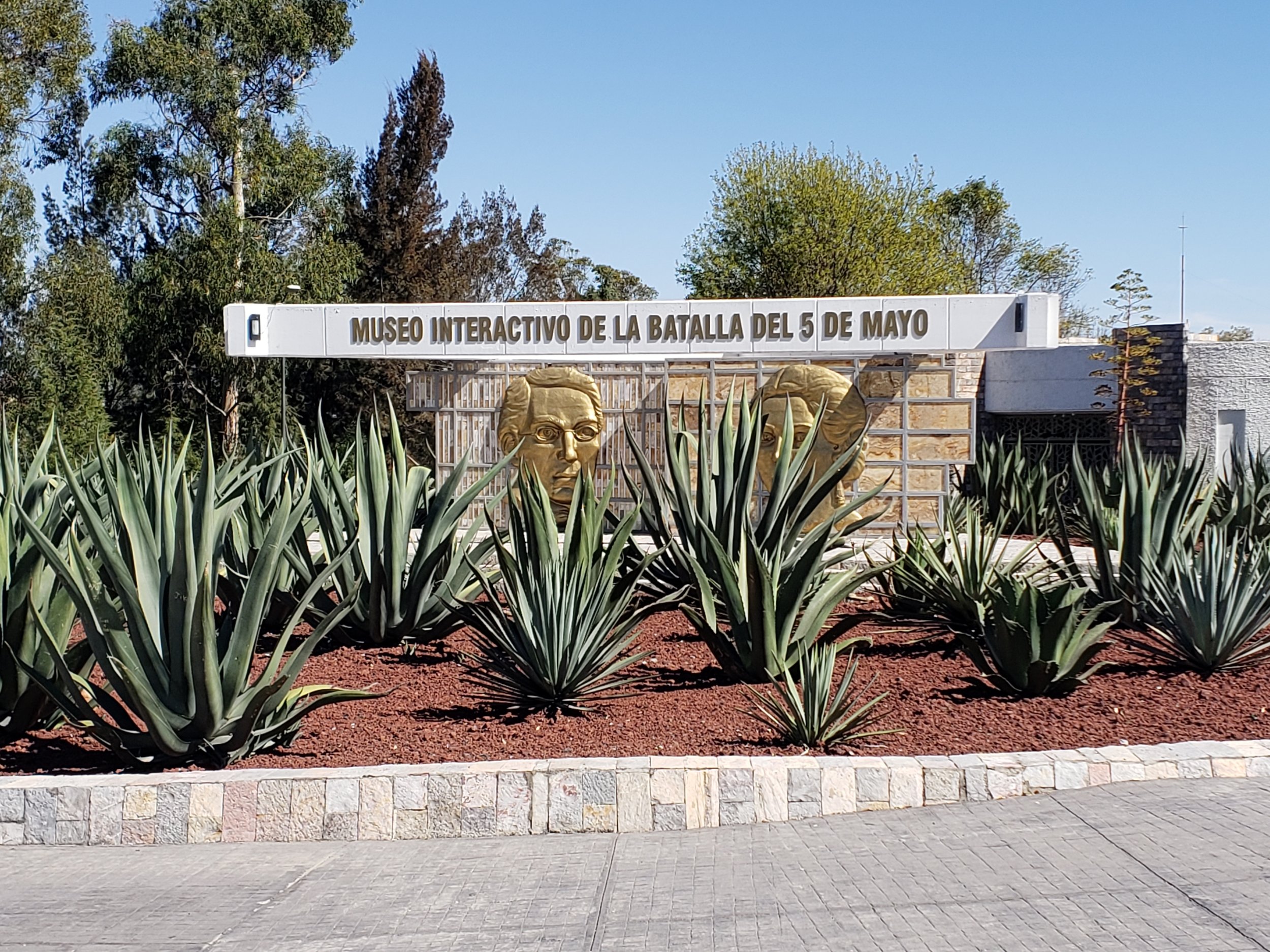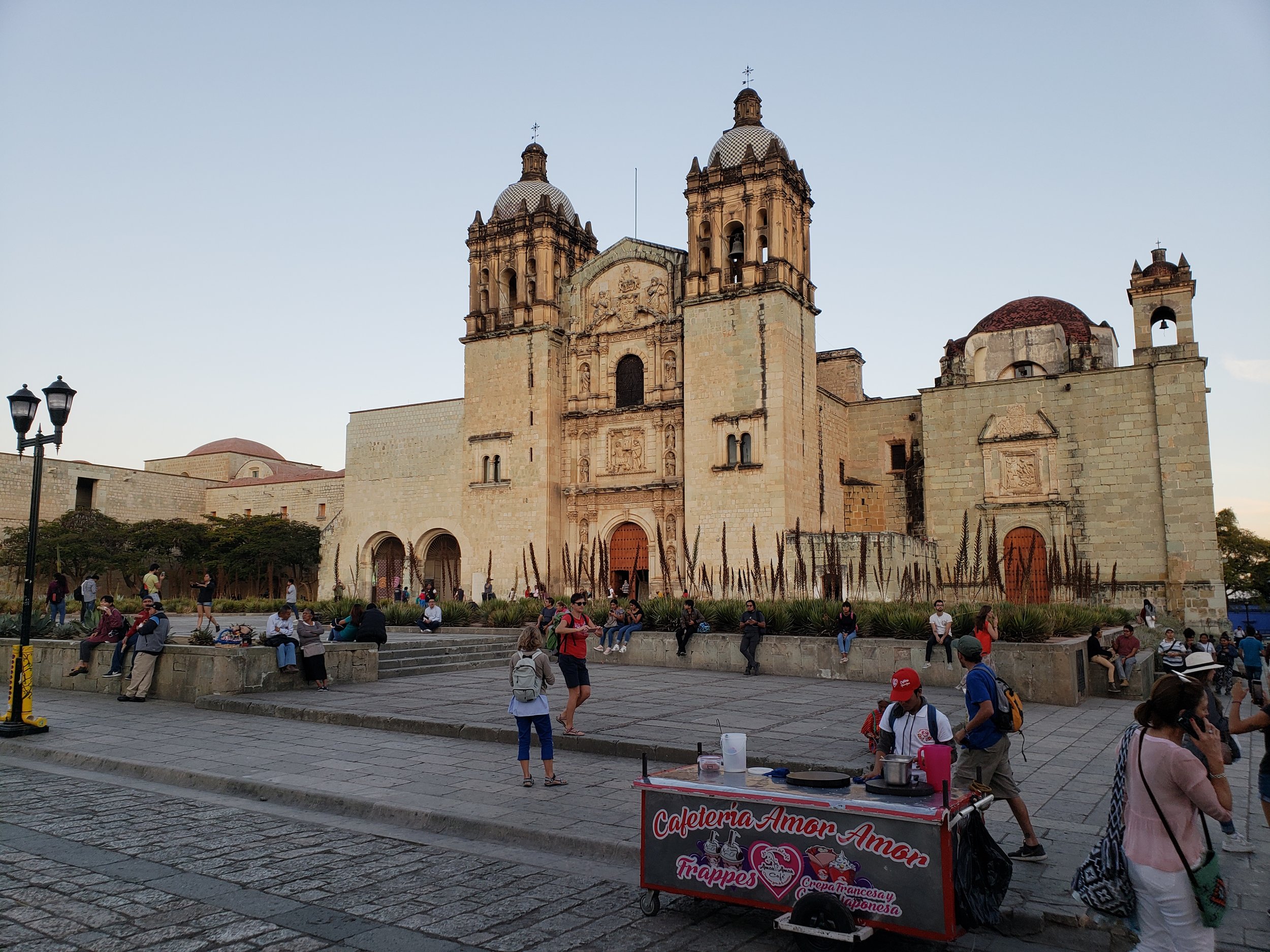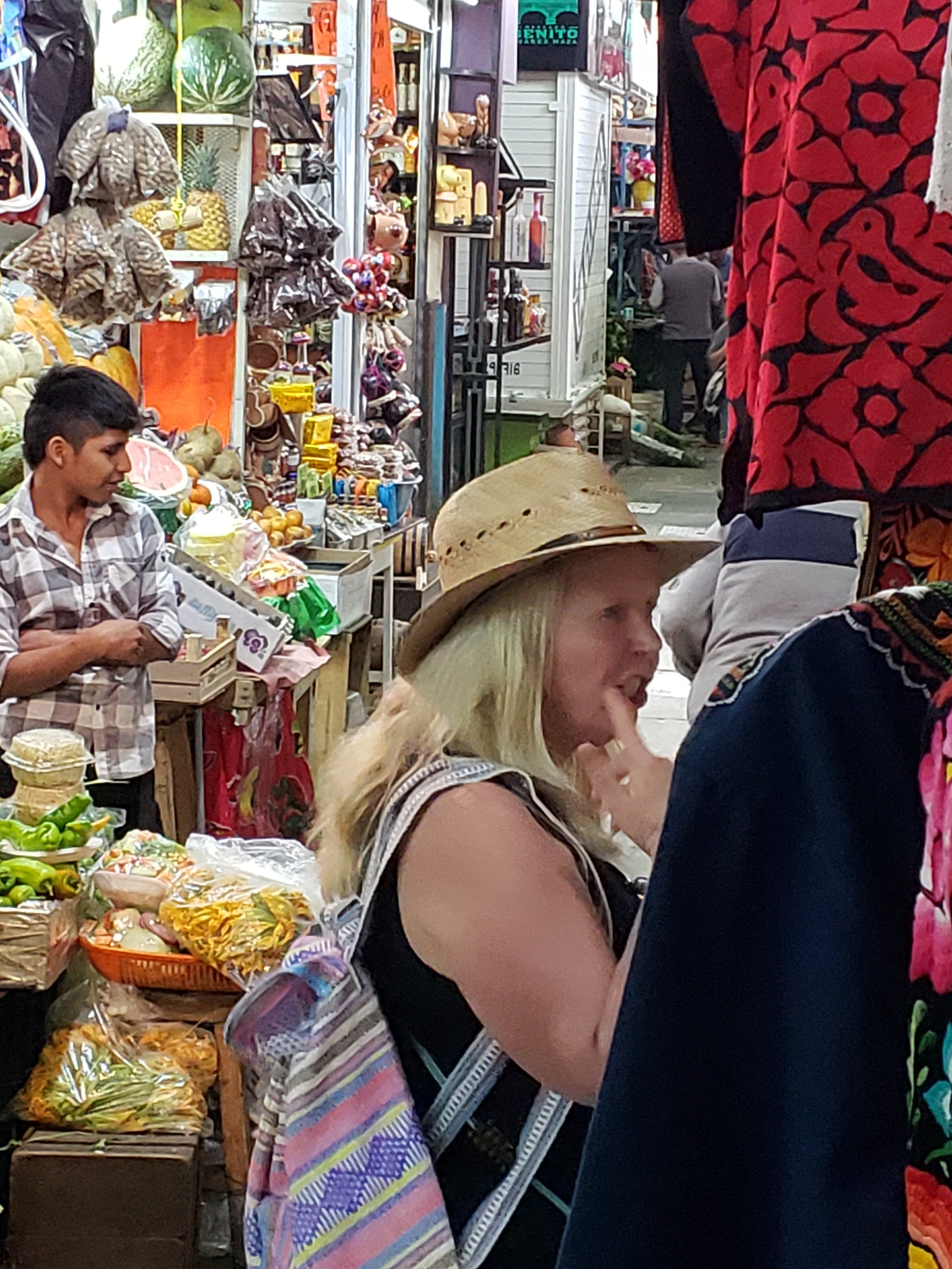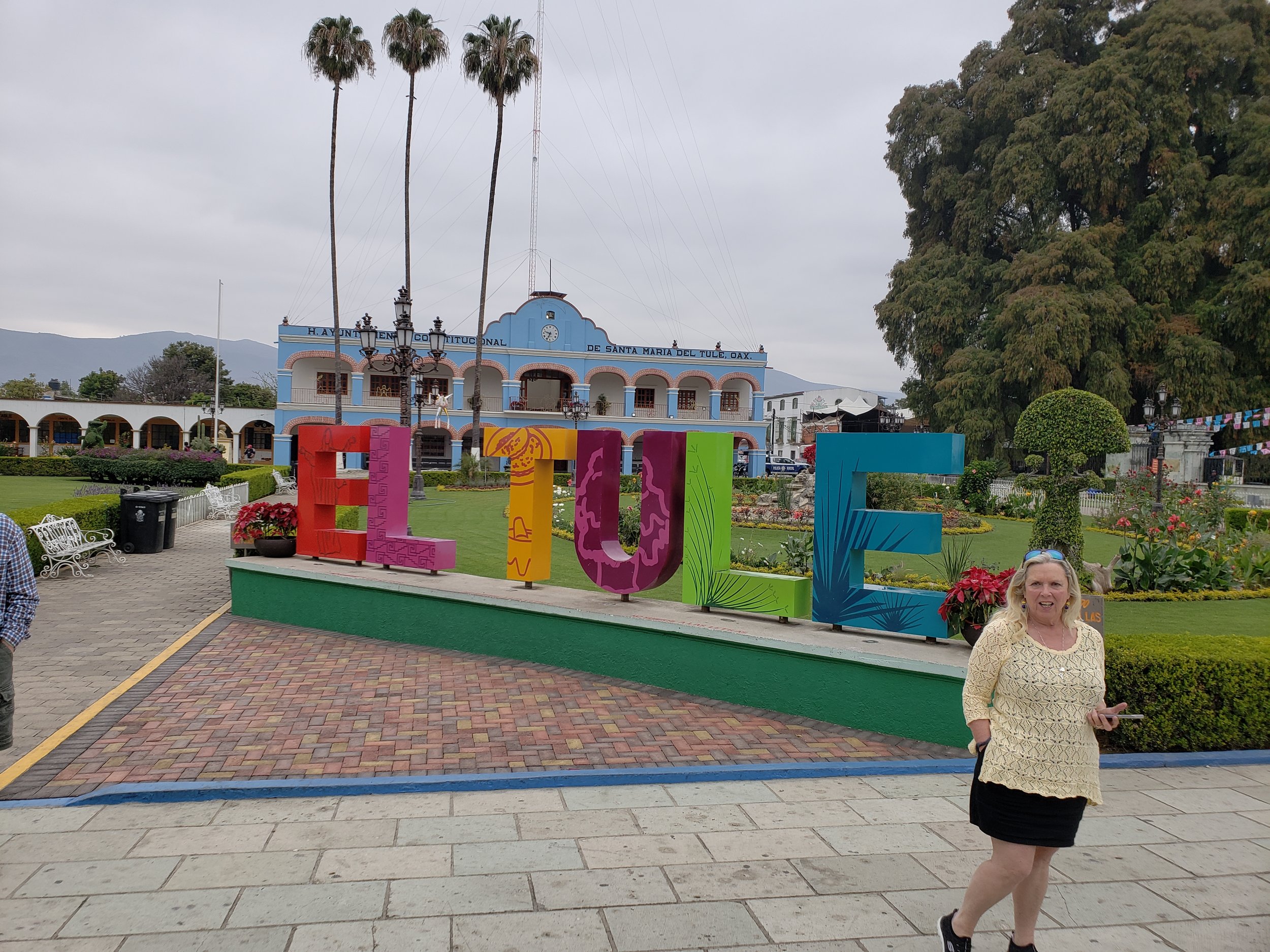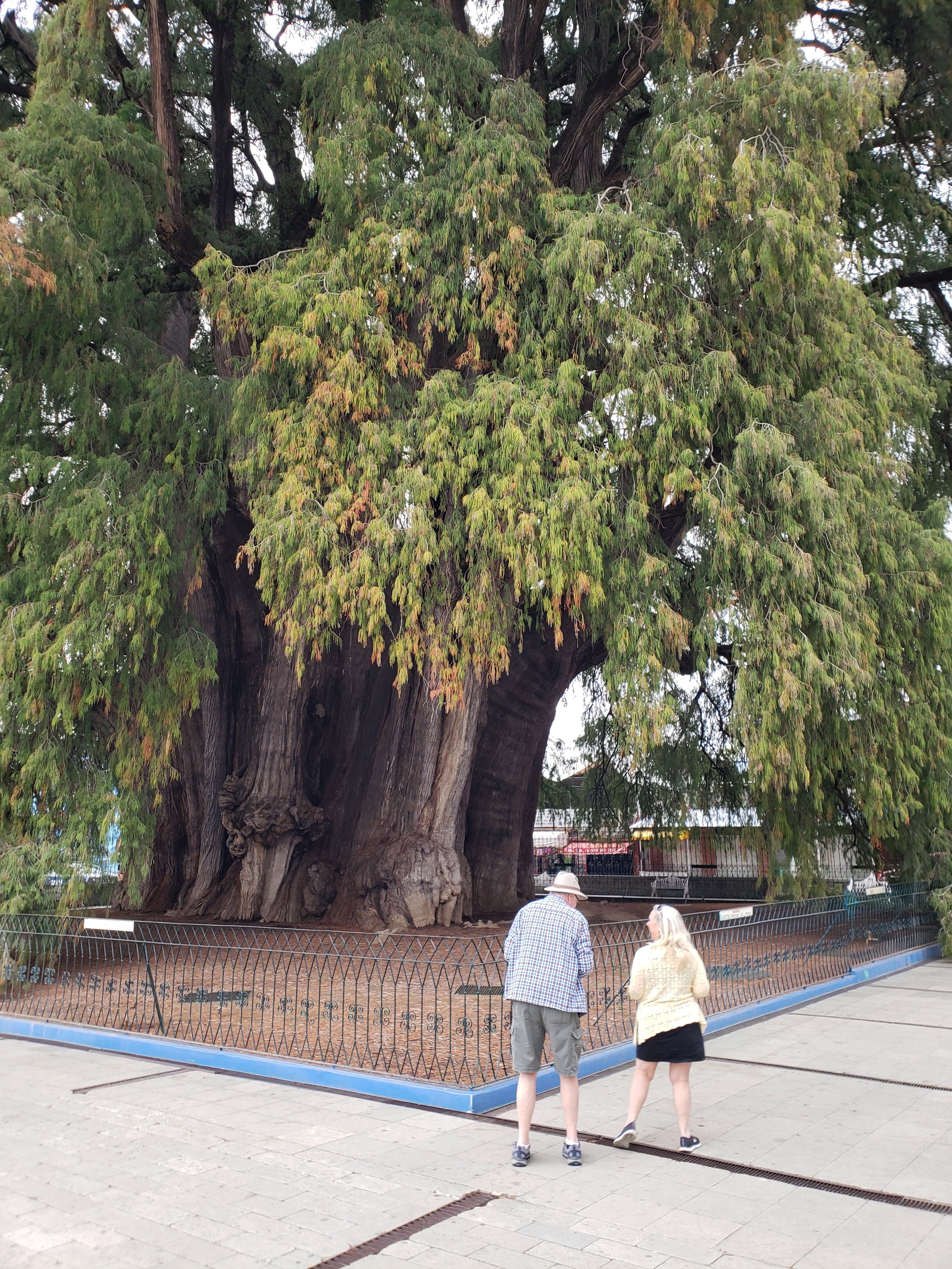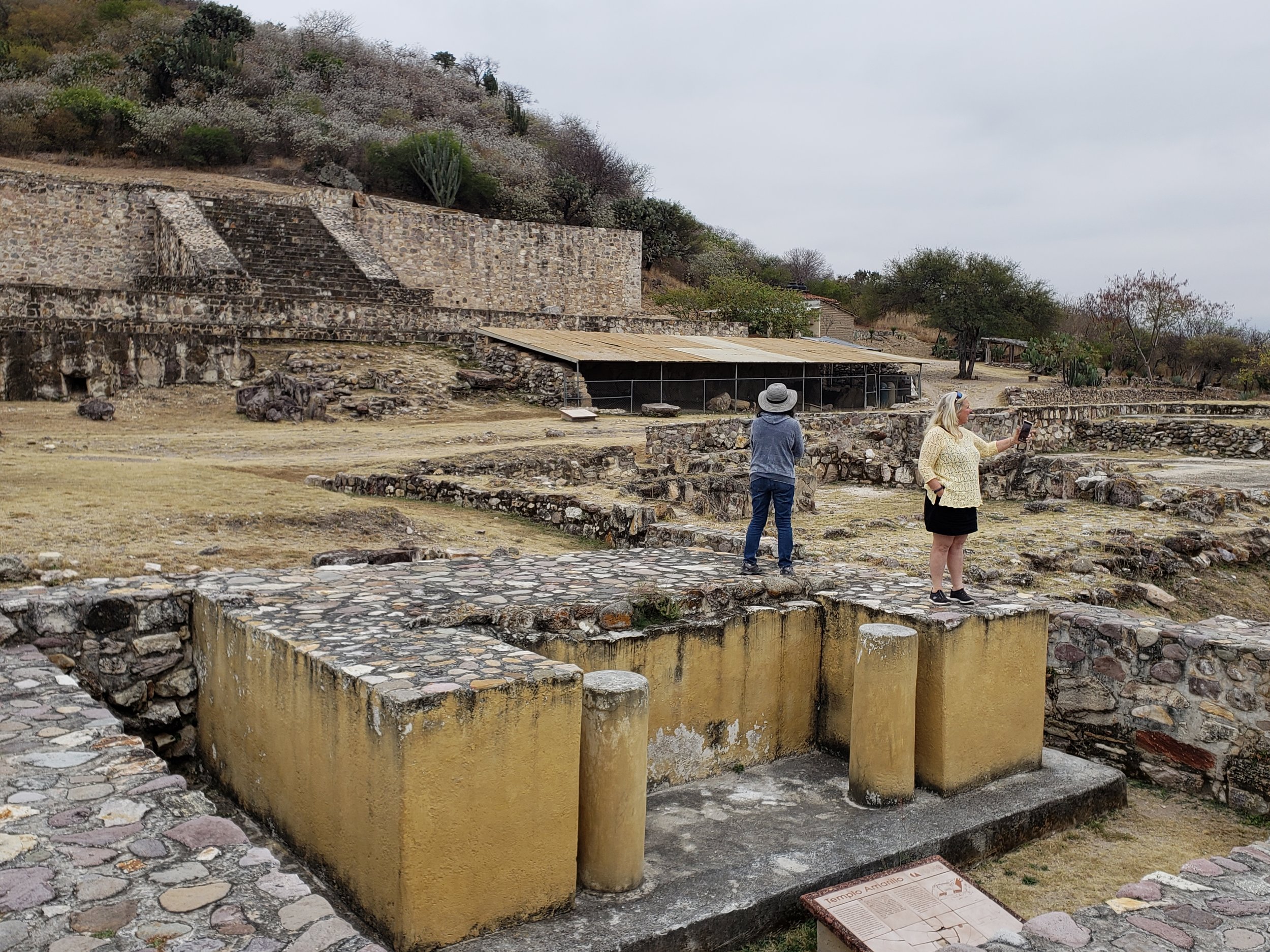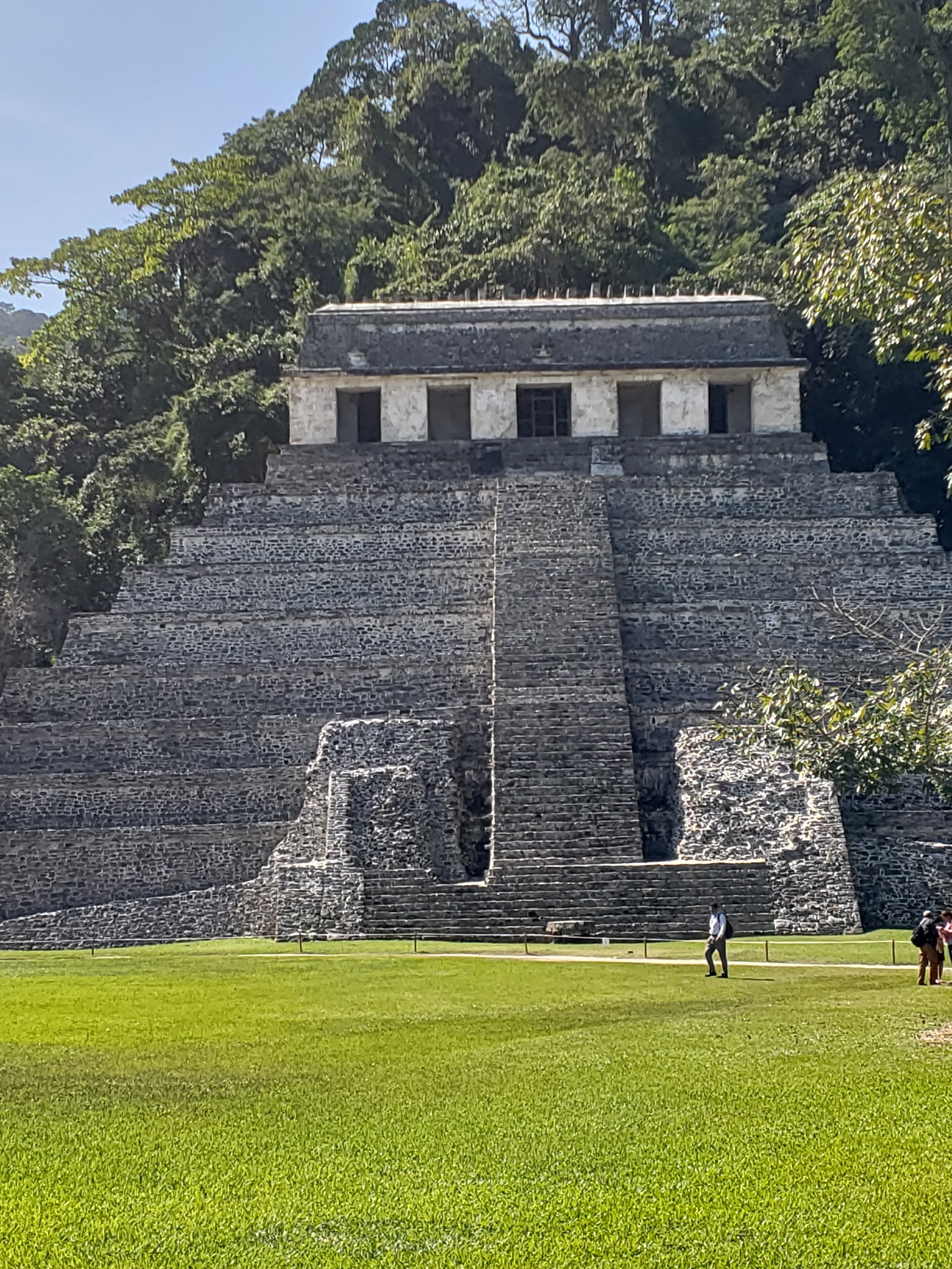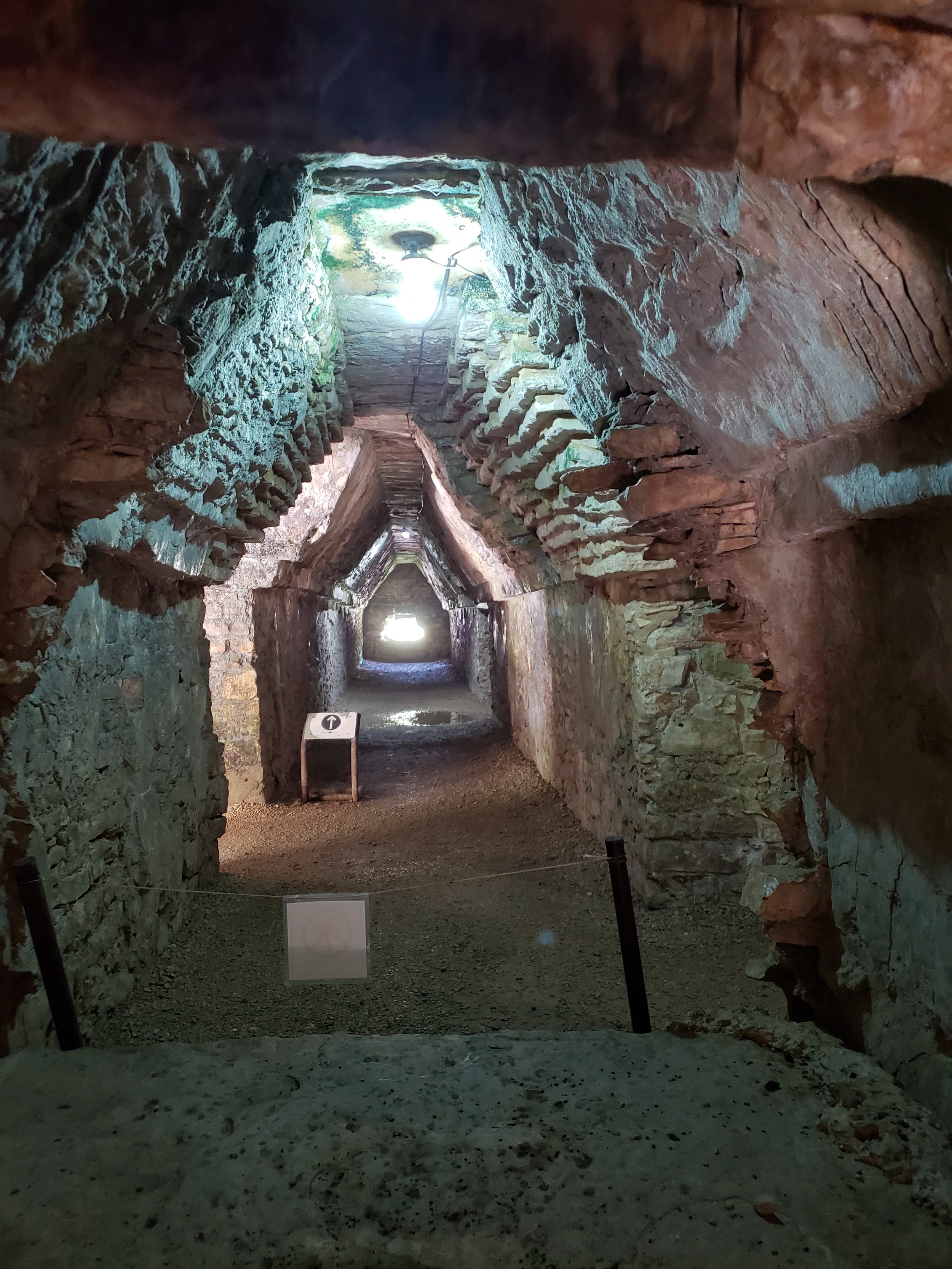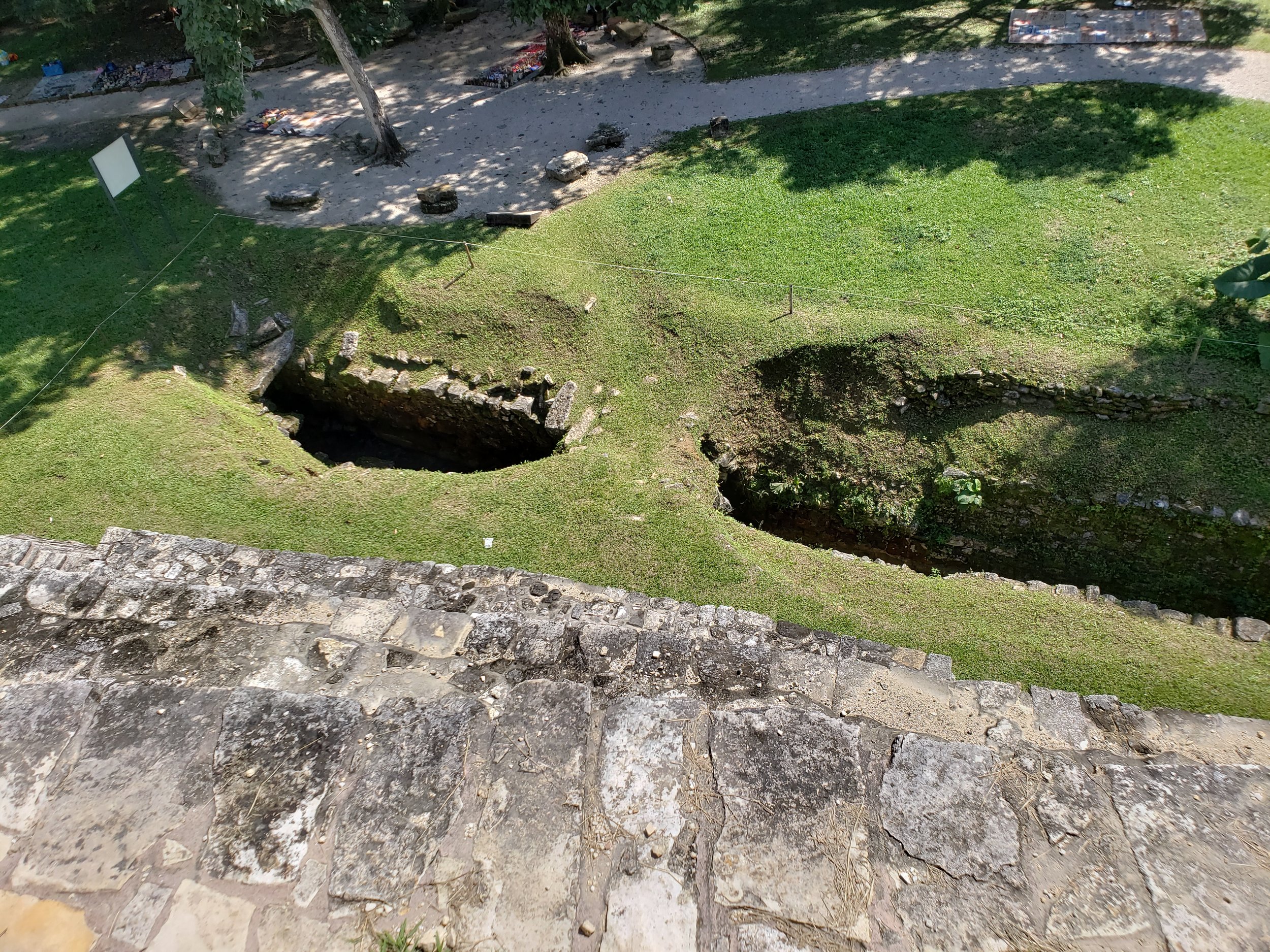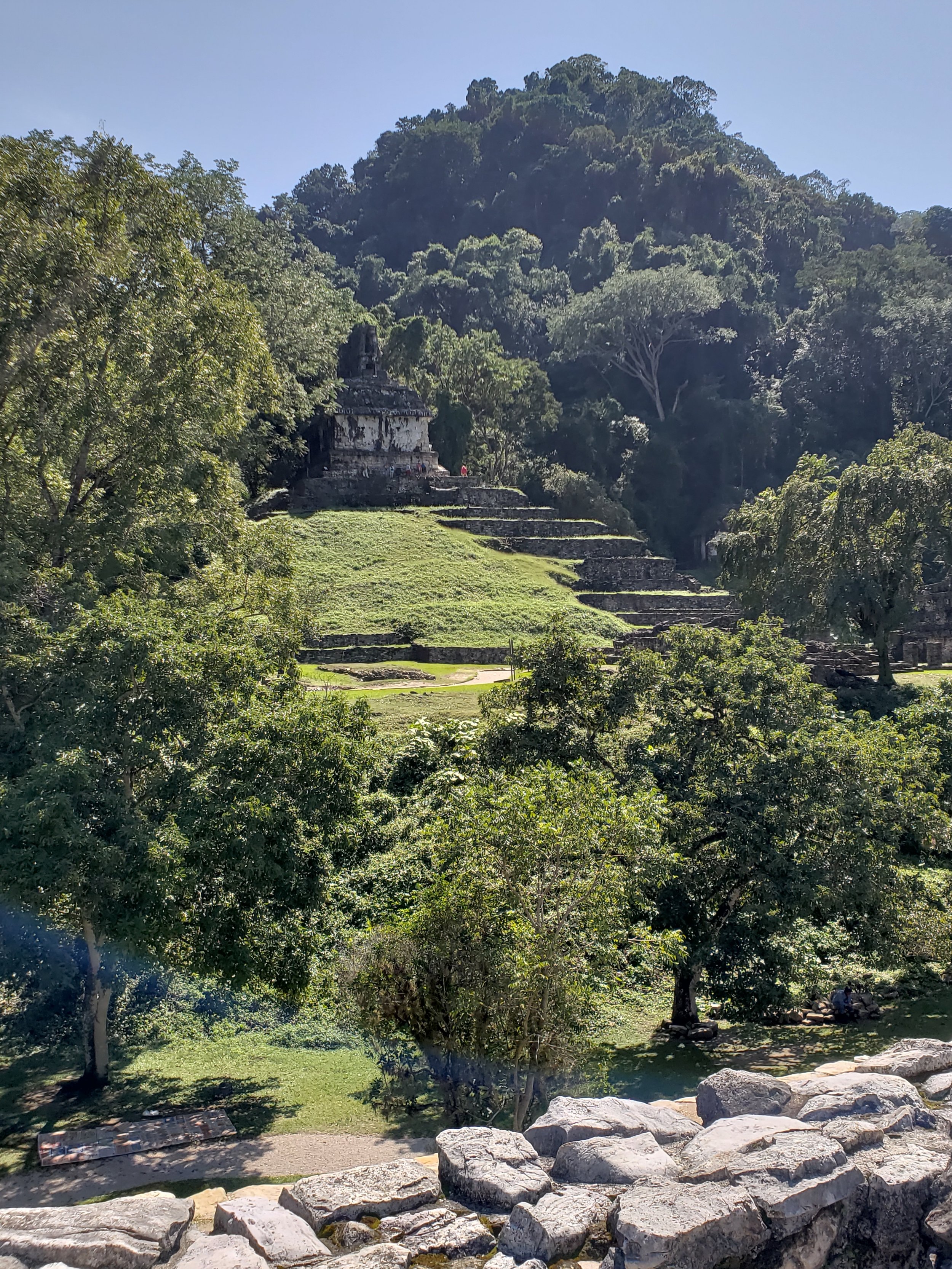On the Road in Mexico: General Impressions
Let me begin with a small confession: I’ve been relaxing in Puerto Aventuras for almost a month, and before that I was equally relaxed somewhere between Progresso and Telchac Puerto. Take this to mean that I have been more than remiss about continuing my Mexico chronicles. So let’s get back to it.
Geography
It was a long, but stimulating trip along the spine of central Mexico. To my surprise (only because I’m not nearly as educated as I thought) this is a very different place than I expected it to be. Visually, central Mexico is exceedingly vertical and dry. I was prepared for the dry, but the mountains - which we began to see in the distance on our first day, after skirting Monterey, and didn’t leave fully behind until we are on our way from Palenque to Campeche (our 17th or 18th day) – in their sheer continuousness, were amazing. Who knew – sorry, I sound like our president – that Mexico was mostly mountains?
Because it’s so mountainous, most of the places we stayed were high. San Miguel de Allende is something like 7,200 feet above see level. Puebla is, I think, a little higher. Oaxaca is about 6,200 feet and Palenque, though not in the mountains, is in the foothills. This elevation makes the climate of the first three cities quite moderate, even though they are so far south. Daytime temperatures seemed to hover in the 70s to near 80, but at night they could dip into the high 30s. As we expected, the weather was dry and sunny at this time of year. Summer is their rainy season, especially in the south, when the moisture comes off the Pacific and flows north over Oaxaca.
The mountains are beautiful and somewhat varied, especially as you drive from Oaxaca toward the Gulf of Mexico. Lydia, who doesn’t enjoy being in the mountains, was nevertheless mesmerized by the steep canyon walls and the climbing, ever-twisting roads. To me, driving between Puebla and Oaxaca was similar to driving in southern Colorado and New Mexico. You don’t have the high peaks of the central Rockies but you make up for that with the vastness, every pass yields a view of more mountains as far as you can see.
I have read that driving from Puebla, east to the gulf, gives you that uniquely tropical effect of dry to wet. Well we didn’t take that route. But as we left Oaxaca and climbed into the semi-arid, cactus-strewn mountains immediately surrounding the city, we entered the pine forest nearer the mountains’ crest. Then, quite suddenly, as we started down the other side (the north slope) we entered a tropical rainforest. It was raining then, and waterfalls tumbled across the road. Suddenly the vegetation was lush jungle, banana trees everywhere, and water, that had been scarce just kilometers behind us, was now gurgling alongside the road. Magical.
The lush plain that runs along the south coast of the Gulf of Mexico is obviously a breadbasket area of Mexico. We seemed to cross wide rivers every few miles and the fields were full of tropical fruit crops and grazing cattle. Another surprise: there’s a lot of beef in Mexico. Stretching through the states of Vera Cruz and Tobasco, this fertile plain was a welcome change for Lydia and me. I could almost feel the skin on my feet starting to heal from the dryness-caused cracking.
After two days of driving parallel to the coast, we finally turned south toward Palenque and the mountainous Chiapan jungles. Here, the road virtually disintegrates for 4, very rough kilometers. The bright green mountains rise to the west and south, and then, without much warning, you’re entering the bustling, little city that surrounds the famous Mayan ruins.
History
Speaking of ruins, we’ve seen so many they really do blur. The highlights for me include Cholula, Oaxaca and Palenque. Just west of Puebla, below two active volcanoes, is the suburb of Cholula. In the middle of this festive colonial town rises a great pyramid in the Zona Arqueologica de Cholula. We visited on Sunday, when the whole town was out enjoying a traditional family day. There were thousands of people spread between the pyramid and the nearby zocalo (main square). The pyramid itself is said to be the largest in the world – larger even than the Great Pyramid at Giza. But because it hasn’t been fully excavated, together with the fact that there is a very large church perched on top – [This Spanish colonial tendency of building churches and monasteries on top of ancient ruins is an obvious display of cultural dominance. You can see the same thing in the Yucatan at Izamal – the yellow city.] – you really can’t judge its size. At the base of the pyramid are the excavated ruins of what was once an important Toltec city. This site is a must see for those who seek an understanding of native American civilizations and their interaction with conquering Spain.
Further south, in the dry hills of Oaxaca, lived the Zapoteco and Mixteca peoples. They too built towns, cities and religious centers. We visited the ruins at Mitla, a well known center near Oaxaca. Here people have lived for literally thousands of years (and still do today, as Mitla is a thriving little town surrounding the ruins) – cave remains have been dated back 11,000 years. Mitla is a well preserved and presented site and a good and inexpensive place to visit. We hired a guide for the day, who drove us into the mountains to a couple of less formal, smaller Zapoteca sites, before taking us to Mitla.
The highlight of our ancient site visits was Palenque, by far. In fact, of all the sites we’ve visited in Mexico, Palenque is our favorite. Part of that is due to its location in the Chiapan foothills. This is a truly beautiful jungle setting; little wonder the Maya chose this site. Our guide was delightful, and we strongly suggest you hire a guide on the way into the park. Palenque was a “living” city, very different from religious centers like Chichen Itza. In the palace you can see the rooms of the king as well as the dormitory accommodations of the workers. Water still flows through the aqueduct the Mayans built to bring running water into the buildings. There is still much digging to be done in Palenque, with some 1500 buildings still not excavated, and there is hope that the new government will throw some much-needed resources into this Chiapan marvel.
While the Mayan civilization gets much of the attention these days, we would be remiss if we didn’t discuss the rich colonial history – a century older than British North America – of Mexico’s central highlands. San Miguel de Allende is a world famous example of 16th and 17th Century Spanish splendor. It’s a UNESCO World Heritage Site now and deservedly so. This hillside city is every bit as enthralling as the hilltop cities in Tuscany. Sitting in an open restaurant window on the main square (Jardin Allende), looking up at the massive church, I could just as easily have been in Spain.
There are lots of tourists in San Miguel, as you’d expect, considering it’s one of the most beloved travel destinations in the world. But in a city of 300,000 or so, you don’t get the feeling that it’s being overrun. But if you do run into one too many gringos or Europeans, take a day trip to Guanajuato. About an hour and a half drive from San Miguel, Guanajuato is the administrative center of the state of the same name. It, too, is a colonial city, but one not nearly as tourist-driven as San Miguel. Here, fewer people speak English. The hills are steeper. And the signs of old money abound. It was and still is ringed by mines – silver and gold primarily – and you can see in the city center the magnificent homes and the beautiful old buildings built with vast mineral wealth. Guanajuato sits atop miles of tunnels that used to be a river. One too many floods gave birth to a great feat of engineering. Now you can get pretty much anywhere in the city by driving or taking a bus underground. Five days in San Miguel de Allende was enough for us, but we definitely would go back for another visit to Guanajuato.
Puebla was the last of our colonial stops (only because illness prevented us from seeing much of Campeche or Merida this trip). It is a large city, the 4th largest in Mexico, I seem to recall, and not far from the “megatropolis” of Mexico City. In the Old City is a magnificent university and some gorgeous colonial homes and buildings, many now serving as elegant boutique hotels. And even though you’re in a big, modern city, the colonial city center is very manageable and easy to walk around. Combine Puebla and Cholulu, with its indigenous history, and this is a great area to stop for a few days.
Oaxaca also displays its colonial past, but my sense is that it is more indigenous and less European. The sights, sounds and smells in Oaxaca are very different from what you sense further to the north. Surprisingly, I didn’t find Oaxaca as enjoyable as San Miguel, but I know our friends Bob and Caroline did. I think Lydia and I were just a bit run down by the time we got there.
Religion
You can’t make it through Mexico without getting a significant dose of religion, both indigenous and Catholic. In fact, it is the intermingling of these religions that truly gives Mexico its distinct culture. The churches and cathedrals are truly amazing, though I’d be hard pressed at this point to distinguish between them. Likewise, the achievements of the indigenous peoples that preceded the European invasion are awe inspiring. When these two strong and proud cultures clashed, it was their very different religious beliefs that ultimately brought them together. As one of our guides pointed out, Catholicism, with all of its symbols and saints, was, in the end, not wholly distinct from the native beliefs in gods and nature. Priests were thus able to convert large groups of indigenous people to Christianity without the violence Protestants faced further to the north. Not that there wasn’t violence and enslavement during the colonization of Mexico, but there wasn’t the level of genocide that there was in the U.S. Here indigenous people, Europeans and mixed races live, if not in total equality, at least in civility and with a shared sense of being Mexican.

